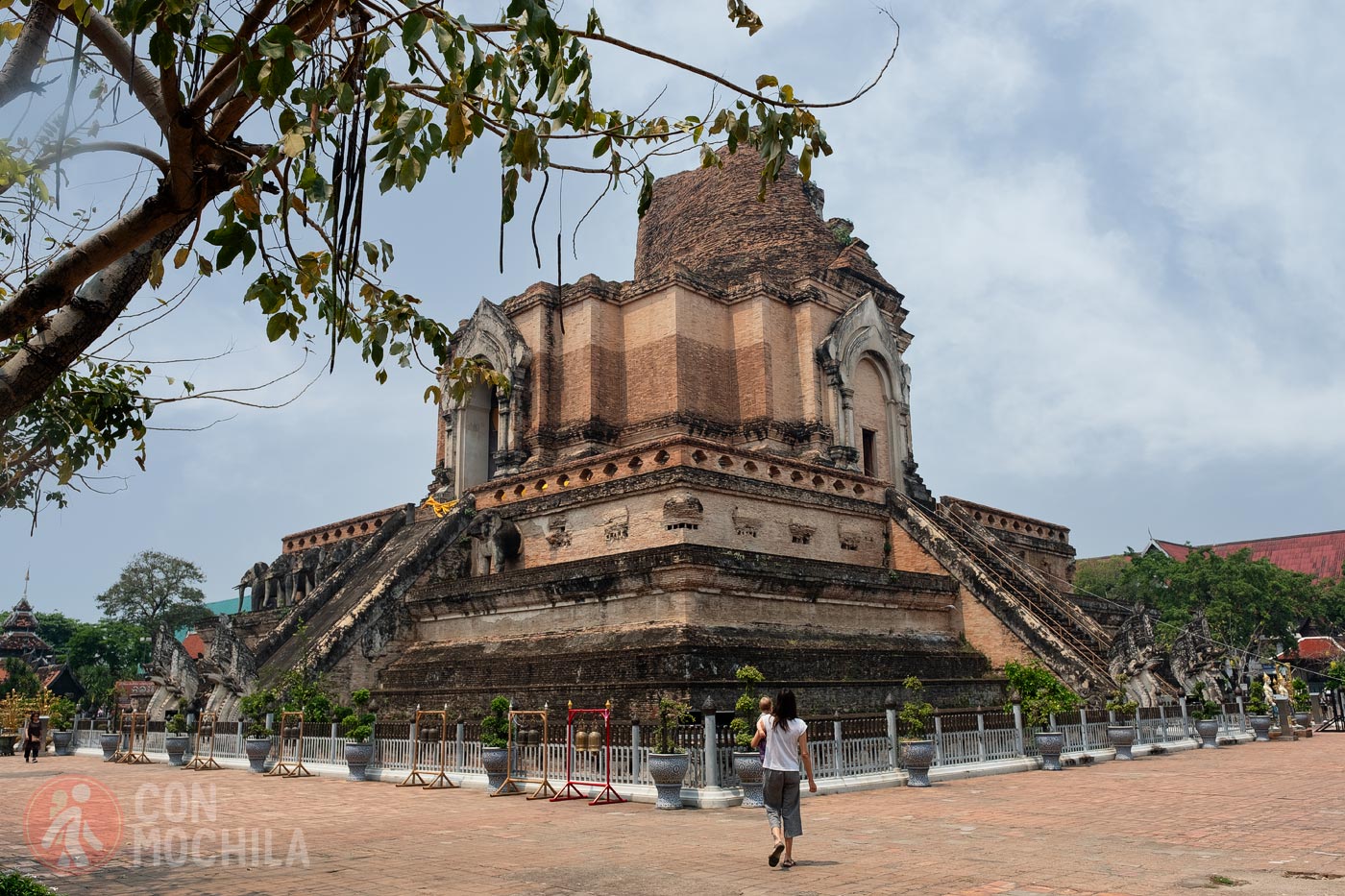What? You want to go on a backpacking trip with a baby under a year old? Are you crazy or what?
Have you been asked this question yet? We bet you have—or something similar. But we know you’re not crazy. You’re responsible parents who simply want to keep doing what you love most: traveling.
Of course, with the arrival of a child come new worries and the belief that having children means giving up certain things, changing your lifestyle, and adapting to the new family member. But that’s not entirely true. At least, it doesn’t have to be that way—it all depends on each family.
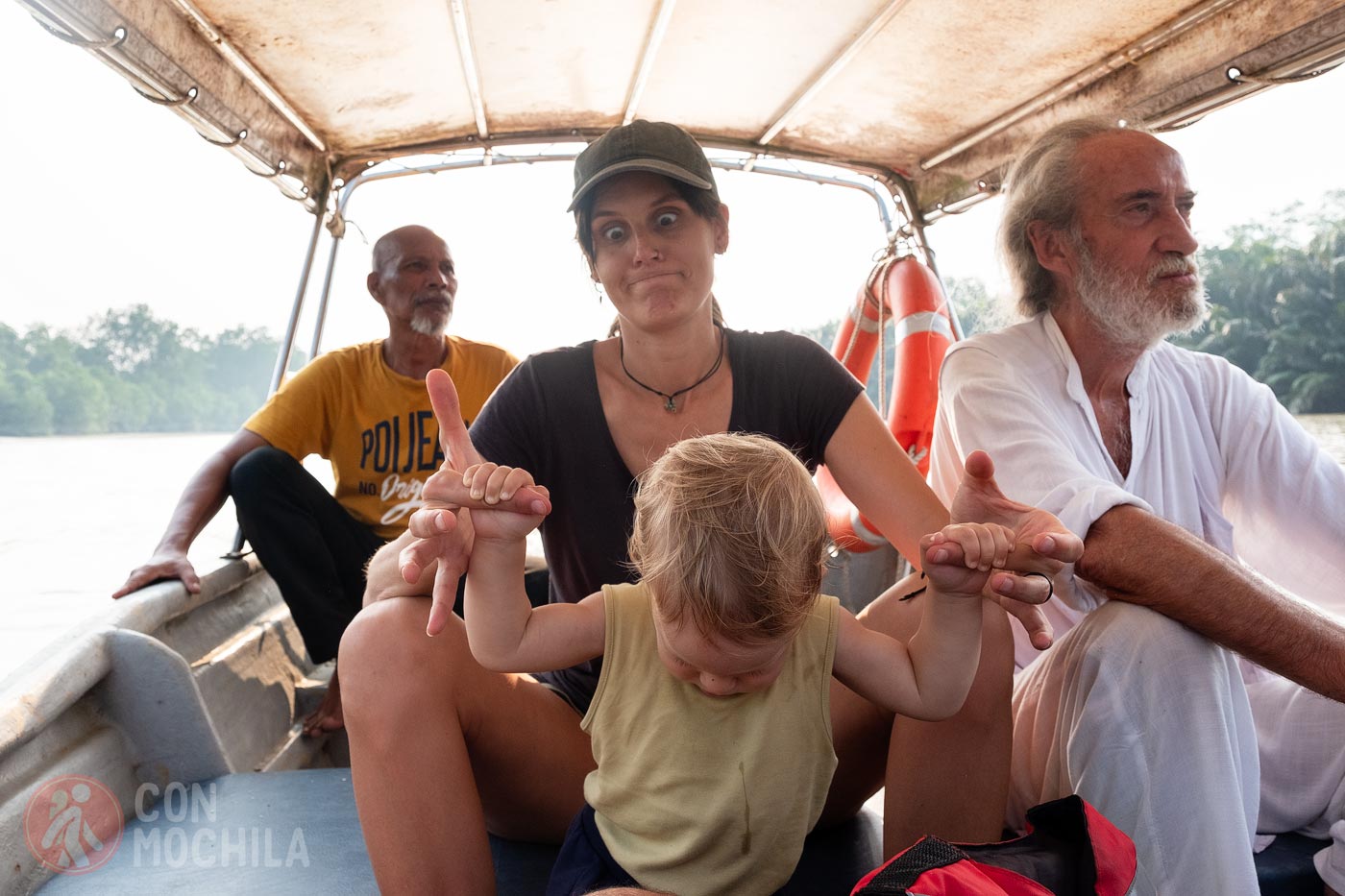
What is true is that when the family grows, you become more cautious. Something you once did without thinking, you now analyze carefully.
Okay, we know you’ve made it this far because you want to travel, and you want to do it with your baby. But you probably have some doubts: Is it feasible? Is it safe? Is it necessary? Is it selfish? Is it crazy?
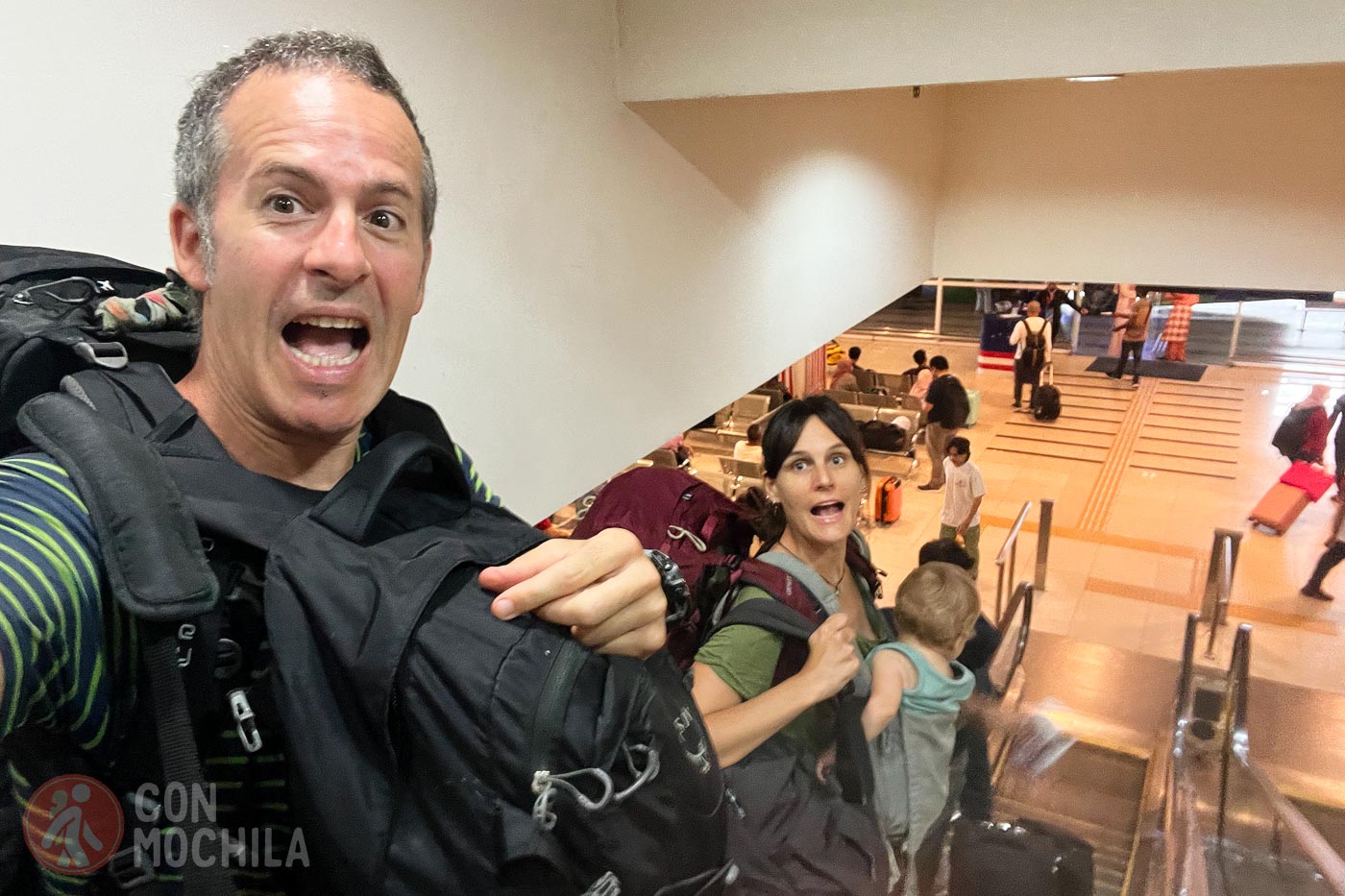
During our son’s first year, we took a couple of short trips to Andalusia and Lisbon, as well as a longer journey that included four countries: Jordan, Thailand, Malaysia, and Singapore.
Because we understand the doubts and fears that arise, we wanted to write this article to help answer the same questions we once had.
According to other traveling parents, you’ll overcome your fears once you take your first trip. But let’s take things one step at a time…
Truth be told, there are many options for traveling with a baby by plane. With most airlines, when purchasing a baby’s ticket (which usually requires paying a percentage of an adult ticket if the baby is under two years old), you can check in their backpack and two additional items (e.g., a stroller and a car seat)

At larger, busier airports, wait times are often shorter for families with small children. Just like wheelchair users and those needing special assistance, families get priority at security and immigration, waiting in a separate, usually much shorter, queue.
For example, when we arrived in Thailand, it took us less than a minute to get through immigration control. On other occasions, when multiple planes landed at the same time, the wait could be over an hour.
If your child is very young and needs a bassinet, long-haul flights often provide one. The crew attaches it to the wall in front of the first row after takeoff.
During takeoff and landing, or if your baby will be in your arms for the entire flight, you’ll be given a small seatbelt that attaches to the parent’s seatbelt for safety.
By the way, that constant background noise from the plane’s engines, it’s the perfect white noise for long naps!
If you are concerned about road safety and have done a master’s degree in car seats for your baby, this might worry you. We already know what to do for airplanes, but what about internal transport? How do we get around in cities or when traveling across the country? Do taxis have car seats?
If you want to rent a car, you can always ask the company in advance if they provide child seats and what type they offer. If they don’t have them or you don’t like them, you can bring your own.
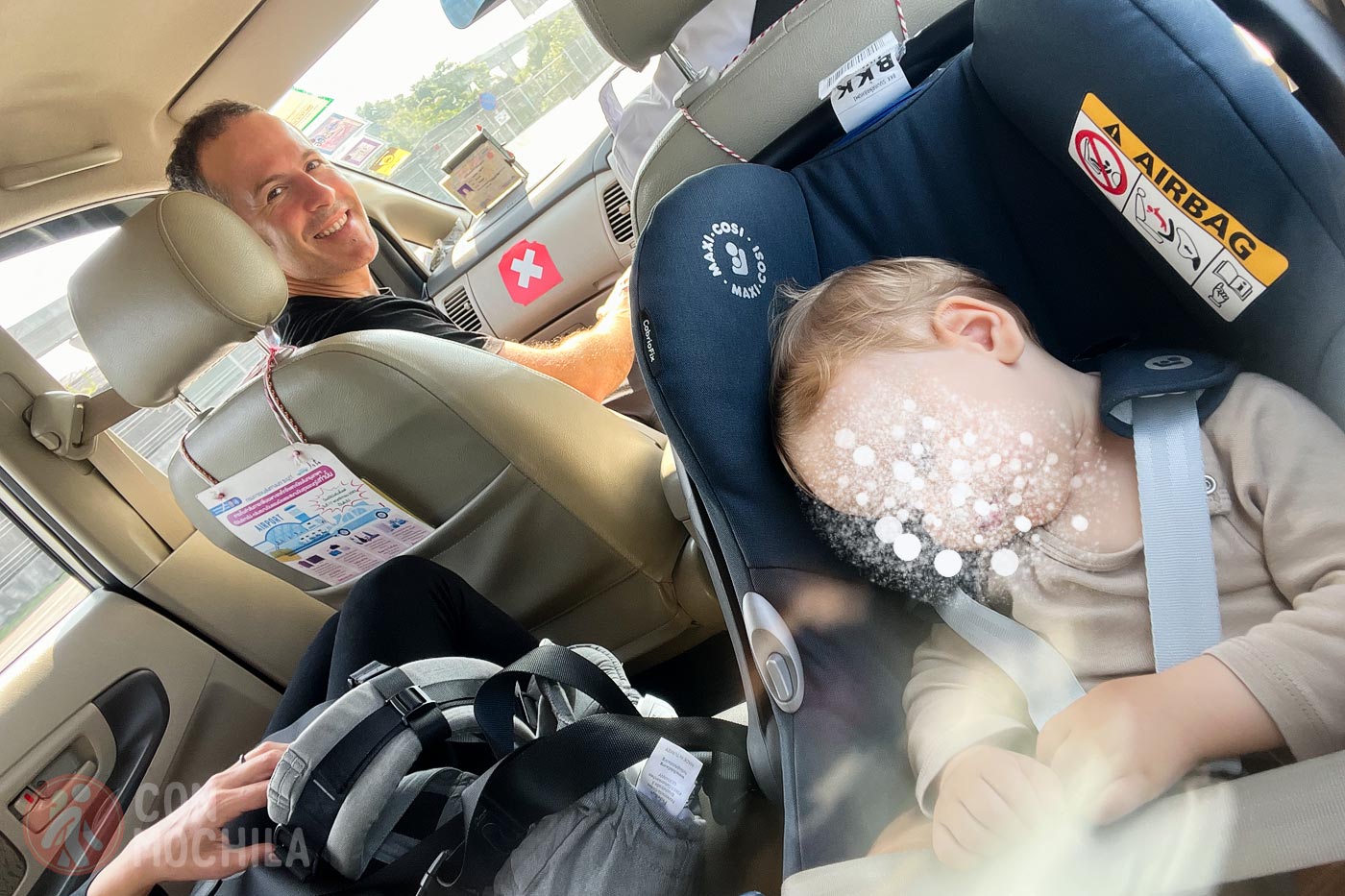
I don’t have a specific recommendation, but during my research, I found that some brands offer foldable car seats. These could be useful if you’re taking a long trip and plan to rent a car multiple times.
When traveling between cities, trains are usually the safest option. Minivans typically don’t have baby seats and, to be honest, in countries like Thailand, they are often driven recklessly.
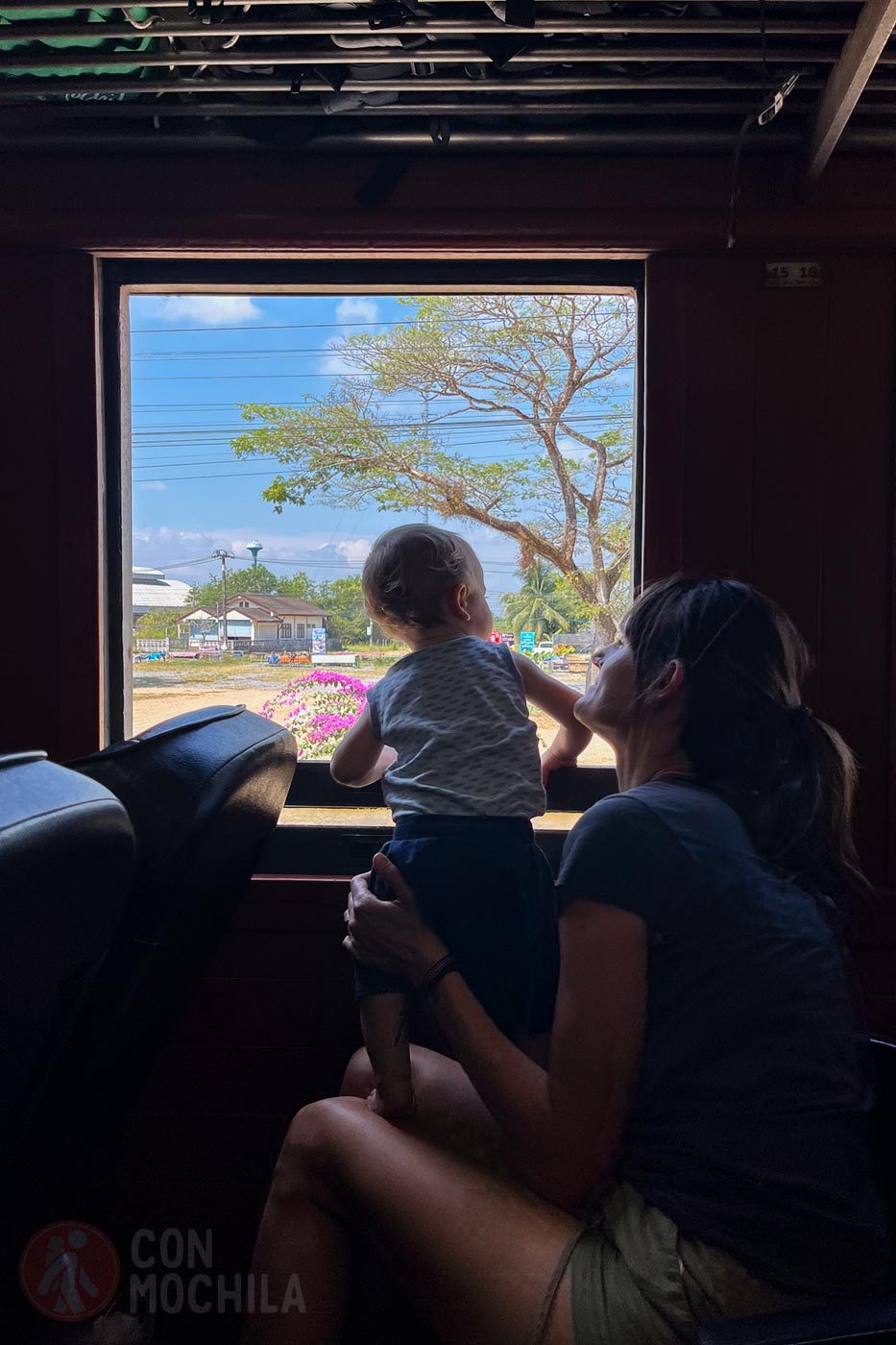
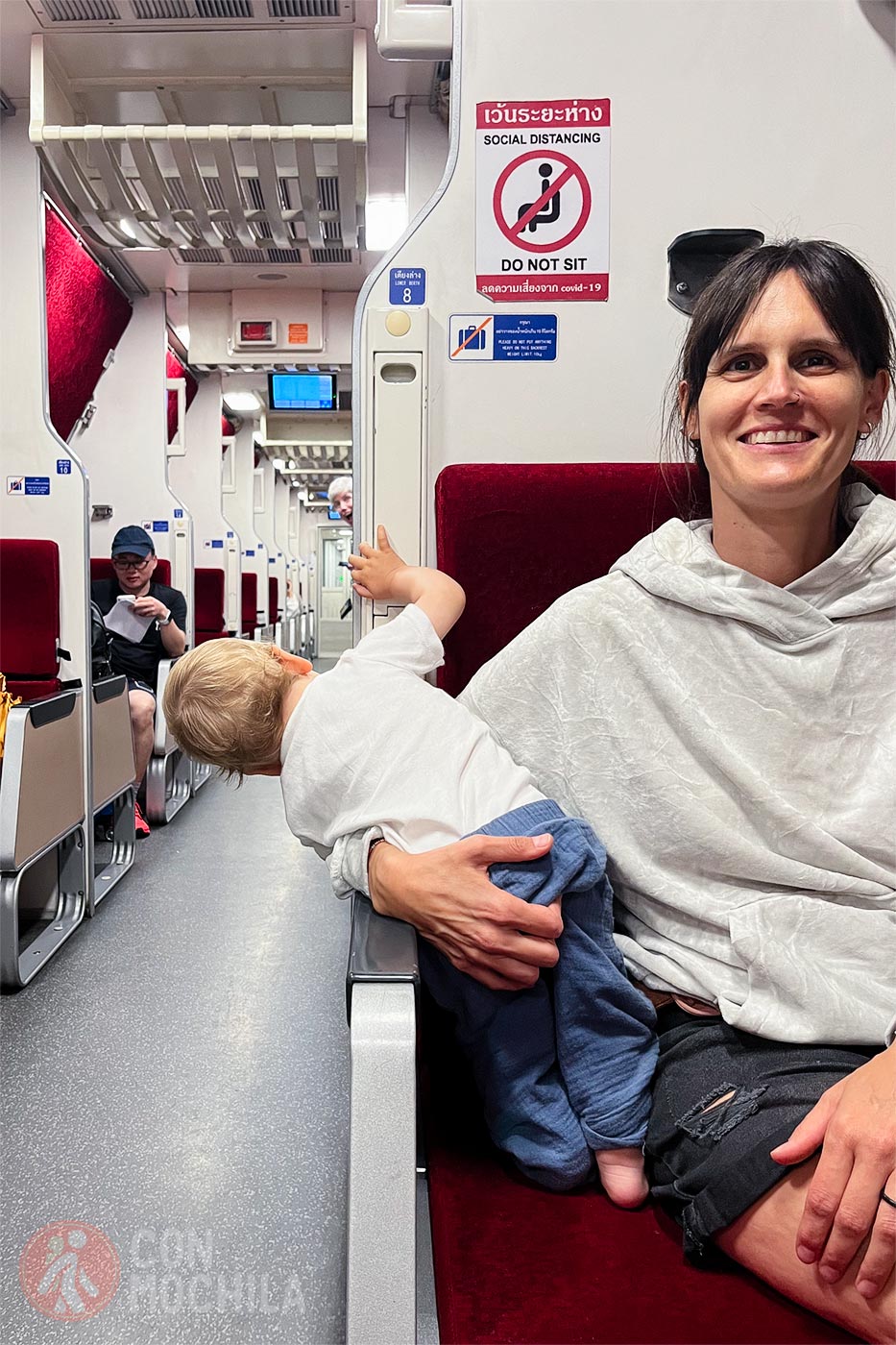
For buses, I would suggest reading online reviews beforehand or choosing modern companies to avoid ending up on a rickety bus and spending the whole trip stressed out.
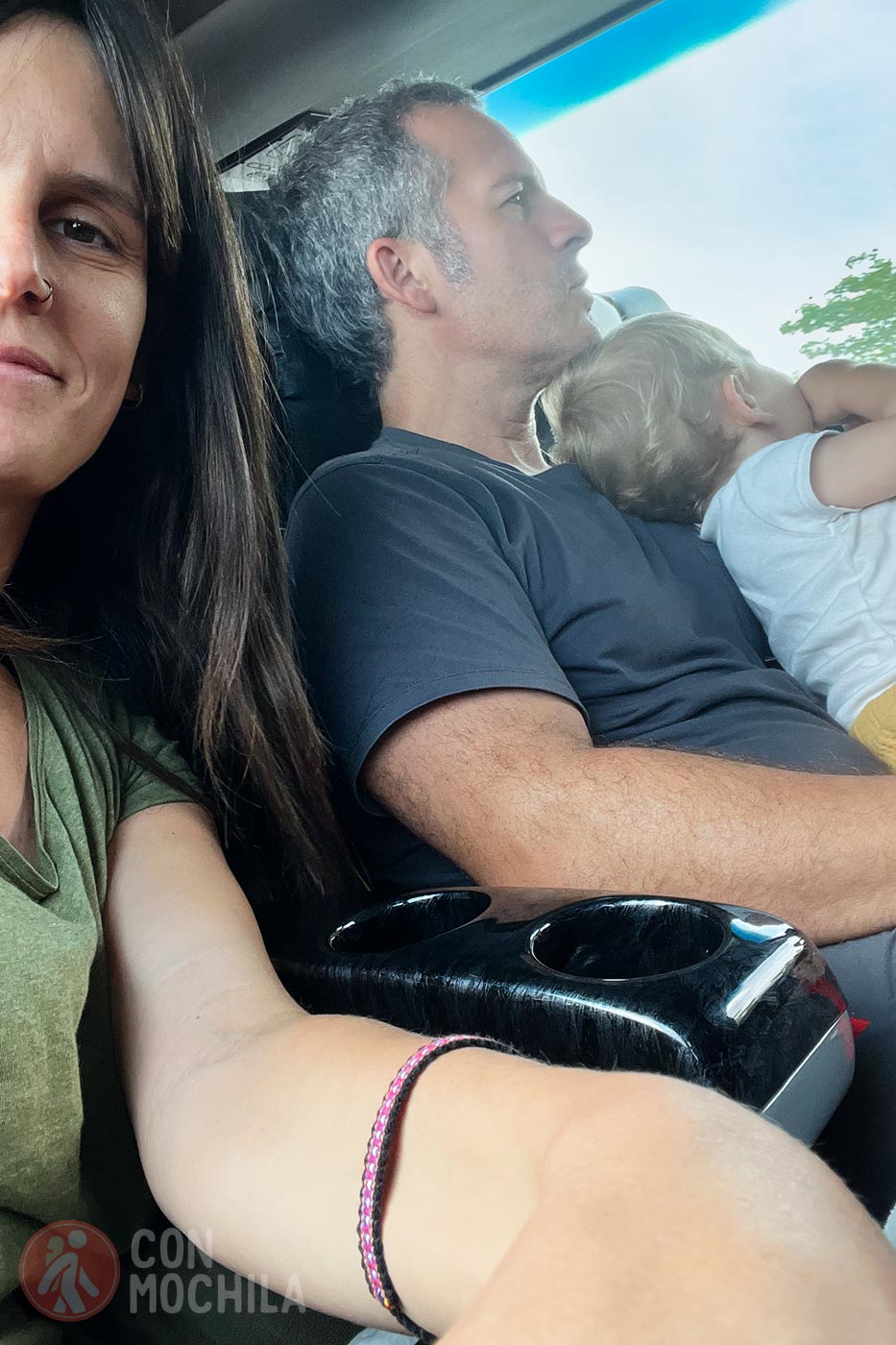
Within cities, if you prefer to avoid taxis without child seats, public transport is usually a much better option. However, in some places, you can request a taxi with a child seat.
And if you’re in a small city or town without a subway or bus network, it’s probably compact enough to walk everywhere you need to go.
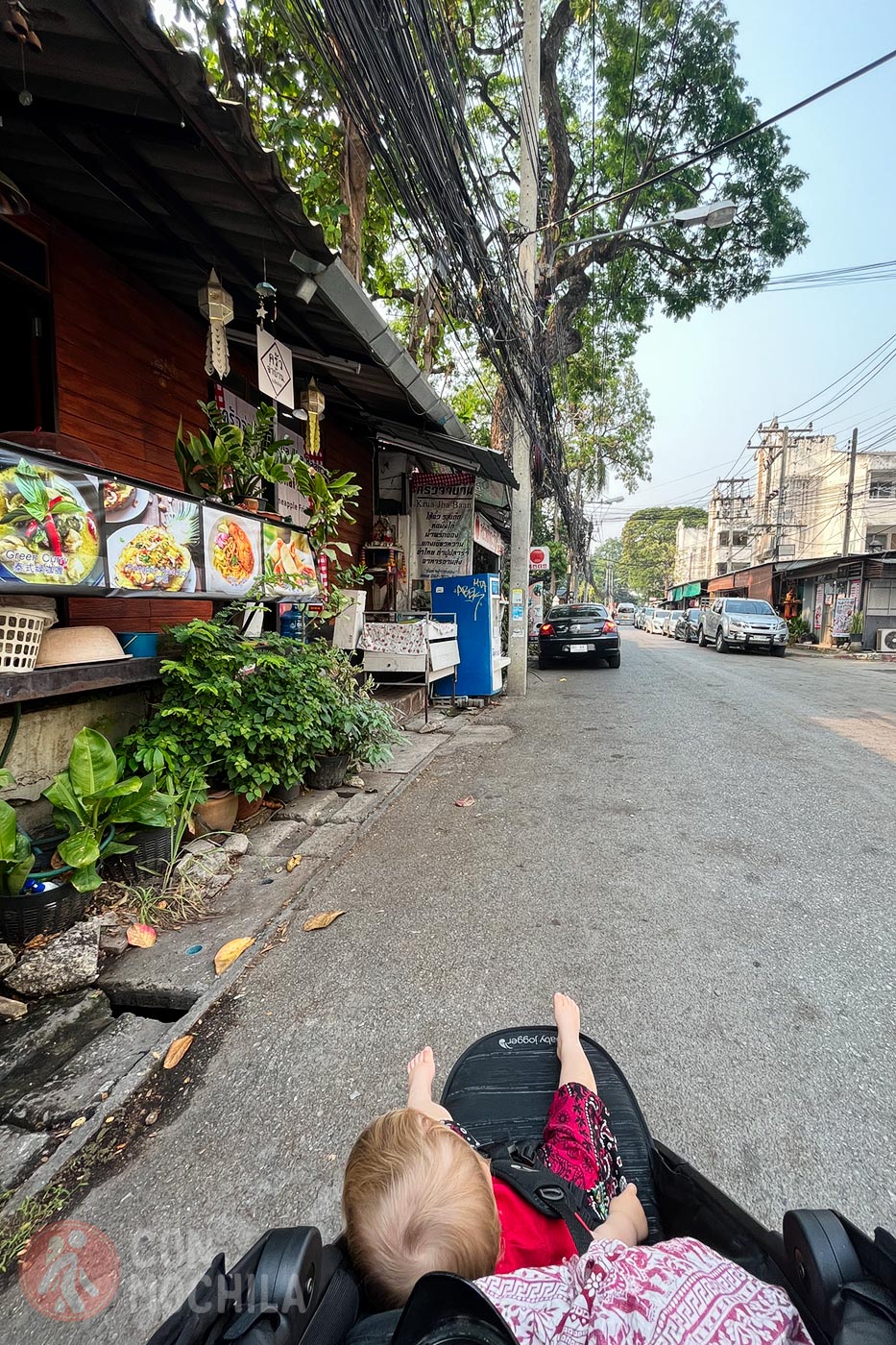
It’s true that your baby is allowed to check in their own backpack on the plane but think about all the times you’ll need to carry it once you reach your destination.
Who’s going to carry that backpack? The parents, in addition to the baby, who is already a lot to handle.
The best solution (for us) is to split the baby’s clothes between the parents’ backpacks, even if it means sacrificing some of your own space. If you’ll be moving frequently, you’ll appreciate carrying less stuff.
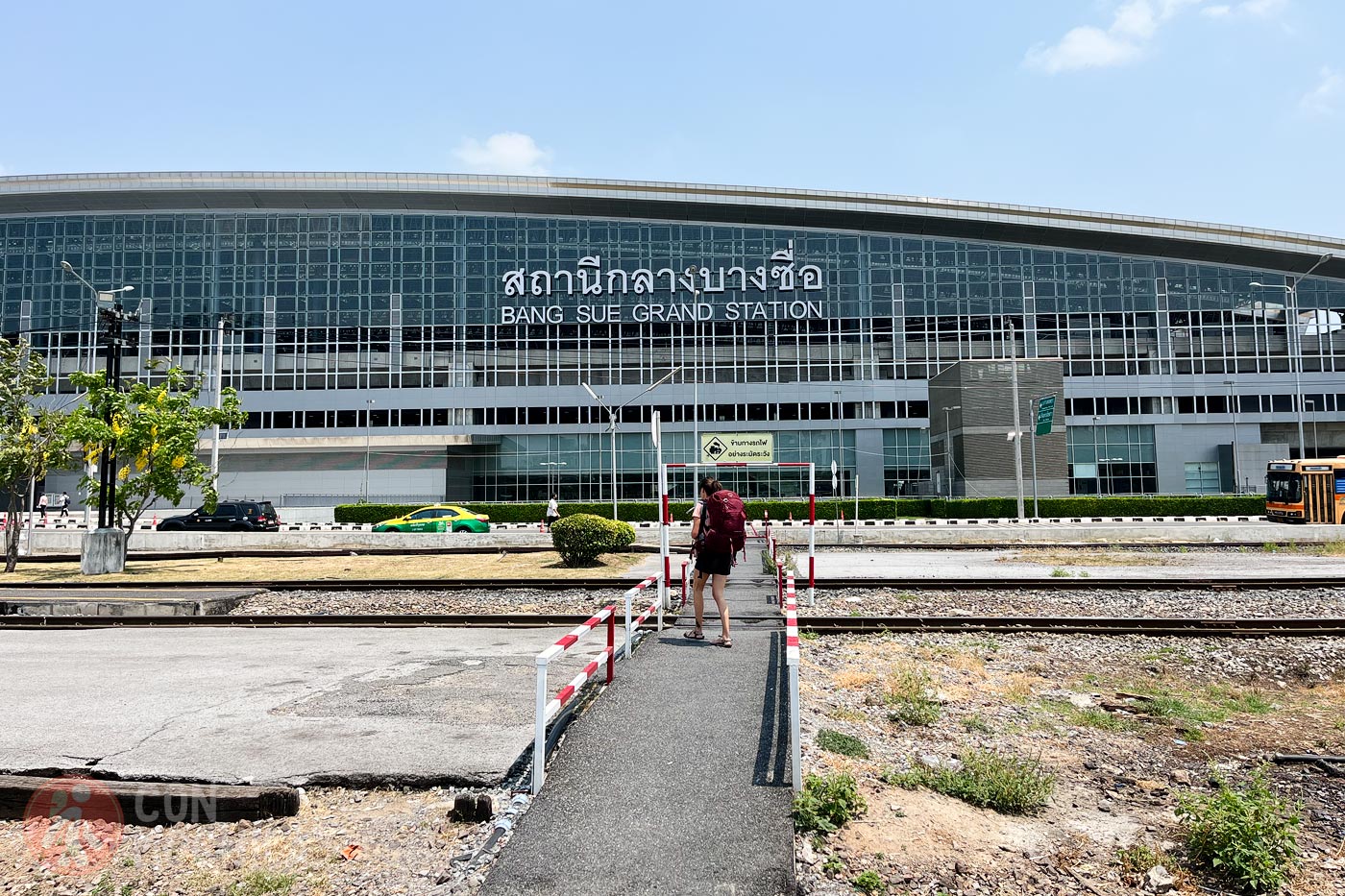
The only essential backpack (which is non-negotiable) is the diaper bag. It’s worth bringing one with a compartment for food.
Personally, I find a backpack much more comfortable than a shoulder bag for hanging on the stroller, especially on days when you leave the stroller behind.
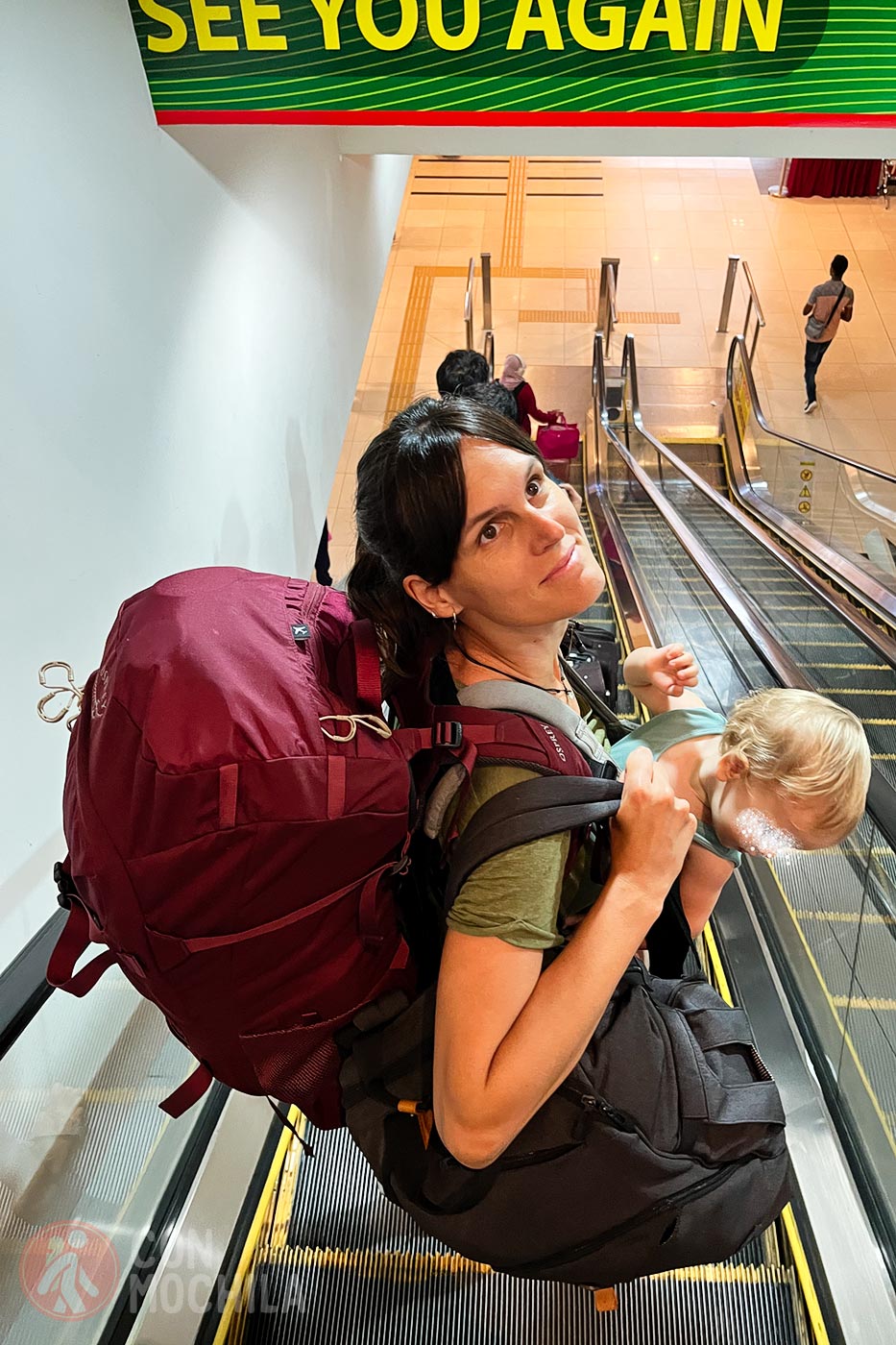
When booking accommodation, we always make a reservation for two people, ensuring that the room has a double bed instead of two singles—because we co-sleep.
We have never informed the hotel that we were bringing a baby, and no one has ever said anything or given us a strange look when we arrived with him.
If you want a crib, platforms like Booking.com offer the option to filter for accommodations that provide this service. In that case, it’s best not to leave it to chance.
If you’re traveling with a baby under 6 months old, you have it easy, the only thing they need is milk. For formula-fed babies, formula is usually easy to find in pharmacies, but you should be prepared if you’re heading to a remote village, desert, or small island without supermarkets.
If you breastfeed, despite the sacrifices it may involve, the biggest advantage while traveling is that it’s one less thing to worry about, and less to carry in your backpack.
Are you worried that people might say something about breastfeeding in public places? I’d like to say, “When in Rome, do as the Romans do,” but in the countries we’ve visited while Andreu is still breastfeeding, I have seen many couples bottle-feeding but only a handful of women breastfeeding—and they were Westerners.
I’m not sure if this is because formula feeding is more common in these countries or if people simply don’t breastfeed in public.
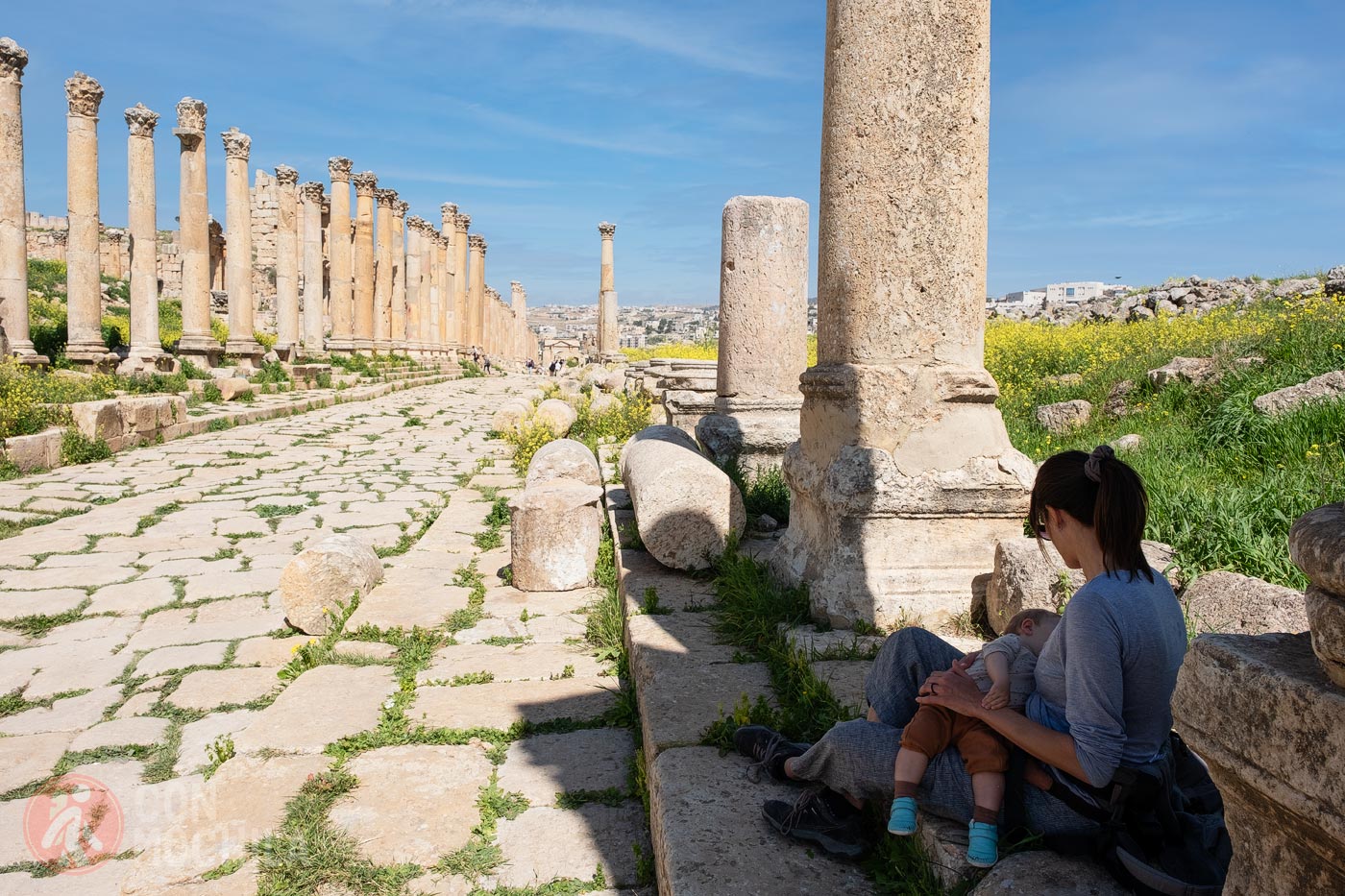
However, I must say that no one has ever made an inappropriate comment, and I’ve been able to breastfeed Andreu peacefully in restaurants, tourist sites, public transport, and even on the beach—without needing to find a designated breastfeeding area.
And I’m talking about very different countries: Portugal, Jordan, Thailand, Malaysia, and Singapore—including some Muslim-majority nations (which, before our trip, I was most concerned about).
That said, I do tend to find a quiet spot with fewer people, mainly for my baby’s comfort, so he stays relaxed.

When it comes to clothing, I find that loose-fitting T-shirts and sweatshirts are much more comfortable than special nursing tops that require you to stick your breast out through a hole. With loose clothing, the baby simply tucks underneath, and that’s it! If you’re a bit shy, this also provides more coverage.
At six months, the introduction of complementary foods begins. A time when new foods are introduced while avoiding salt and sugar. Not everything from the adult menu will work (and often, not even from the children’s menu).
If you’re going to use baby food, I’ll tell you the same thing as with formula milk—it’s easy to find in pharmacies and supermarkets, so it’s just a matter of managing your stock.
If, on the other hand, you’ve decided to try Baby-Led Weaning (BLW) and solids, here are some tips:
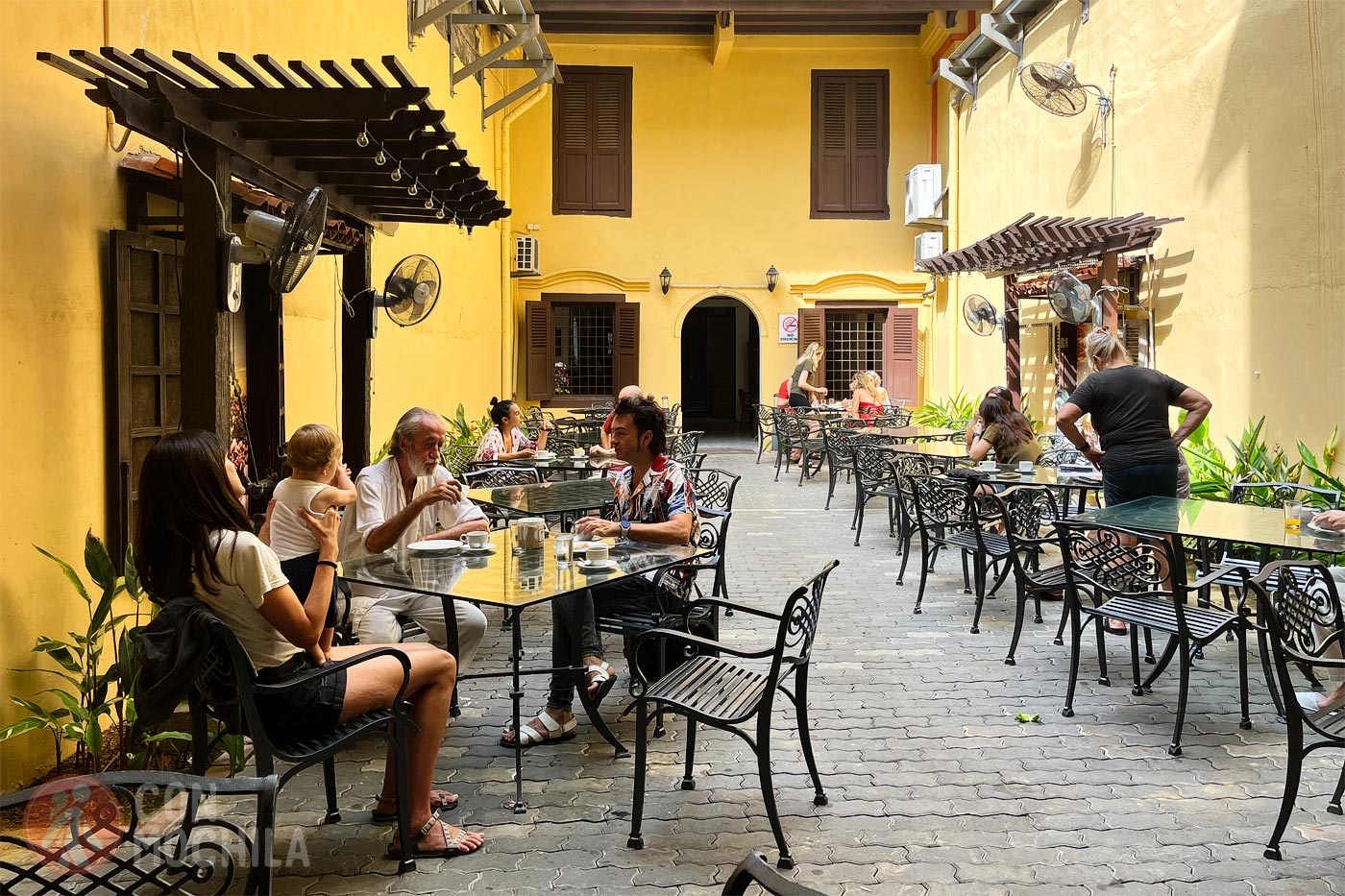
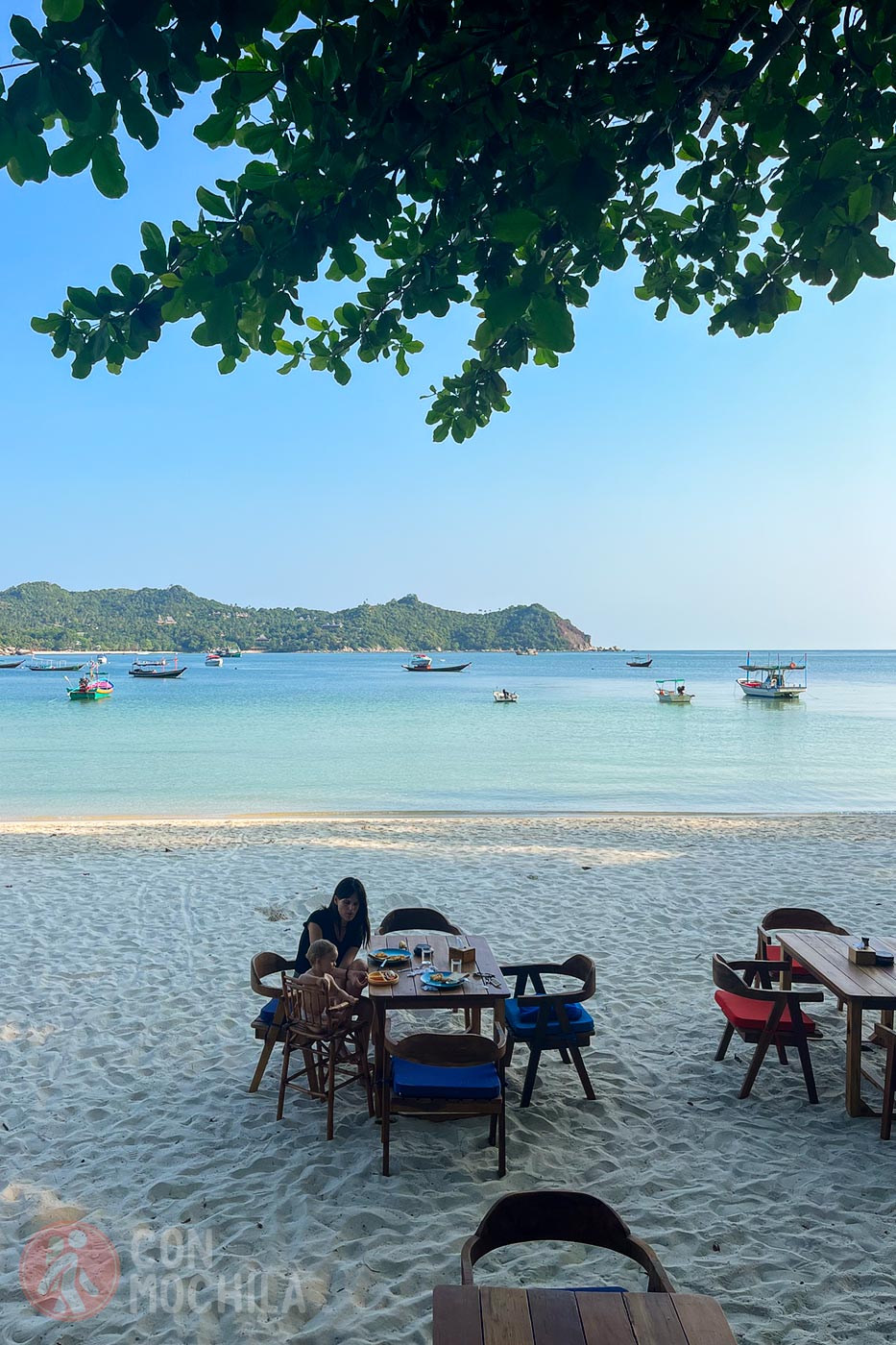
Do you need to carry a full kitchen setup with you? No, not at all! For us, the most useful items were Tupperware (more practical than a suction plate, as it doubles as both a storage container and a plate), a bib, a couple of silicone spoons, and a training cup.
And don’t worry about restaurants, even in the most unexpected places, you might find the famous IKEA highchair. We’ve even tripped over its legs on the beach!
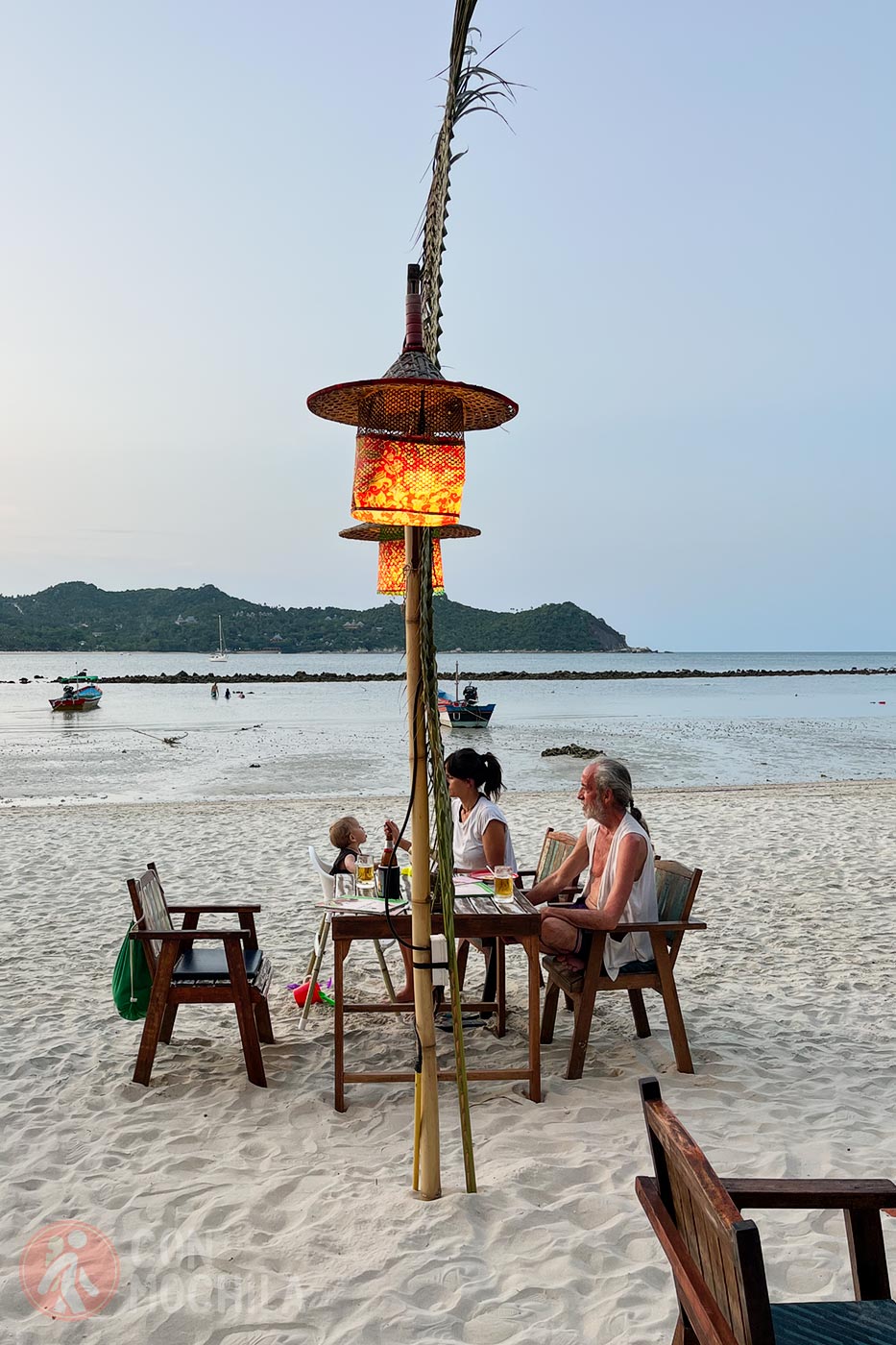
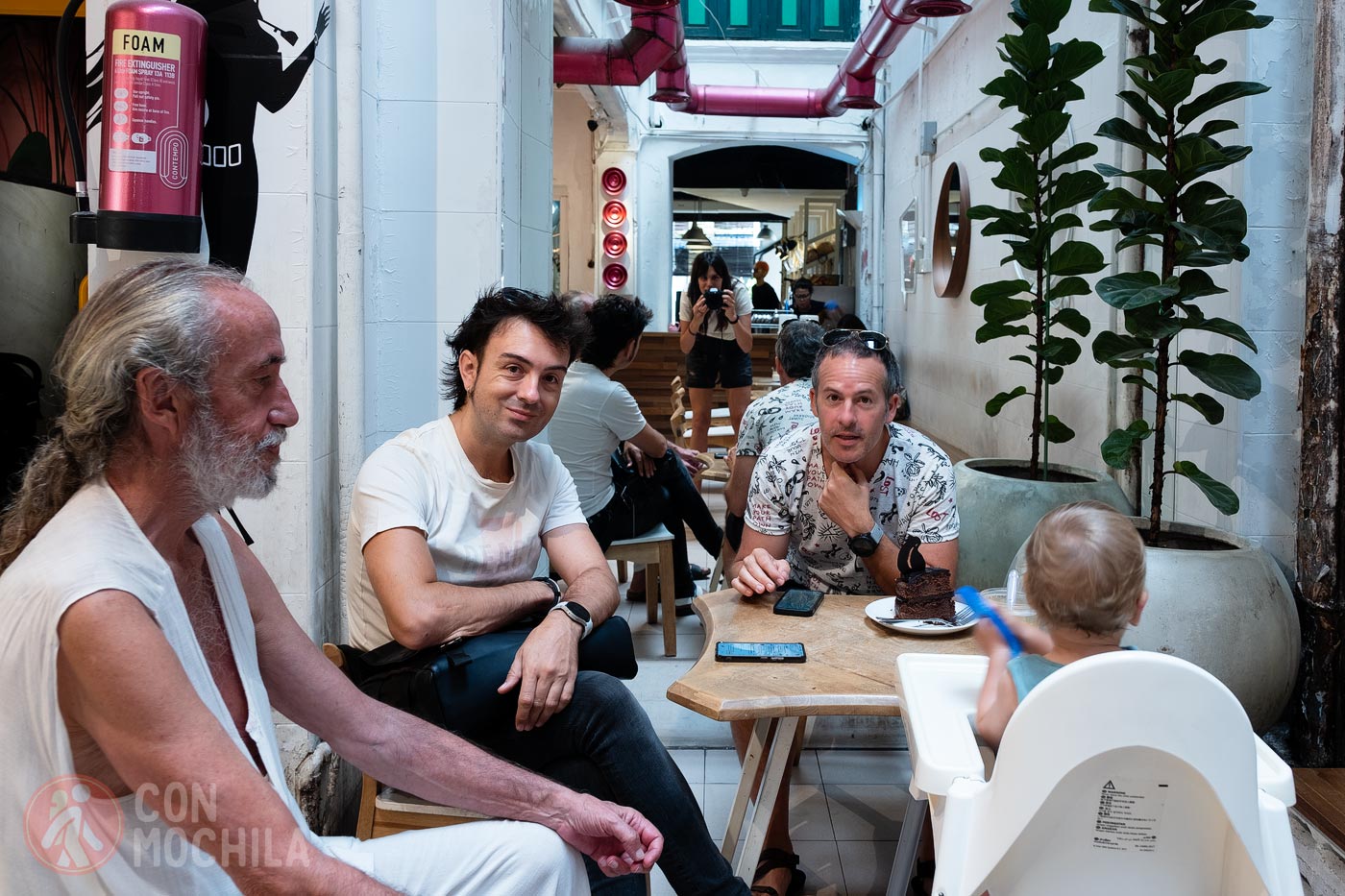
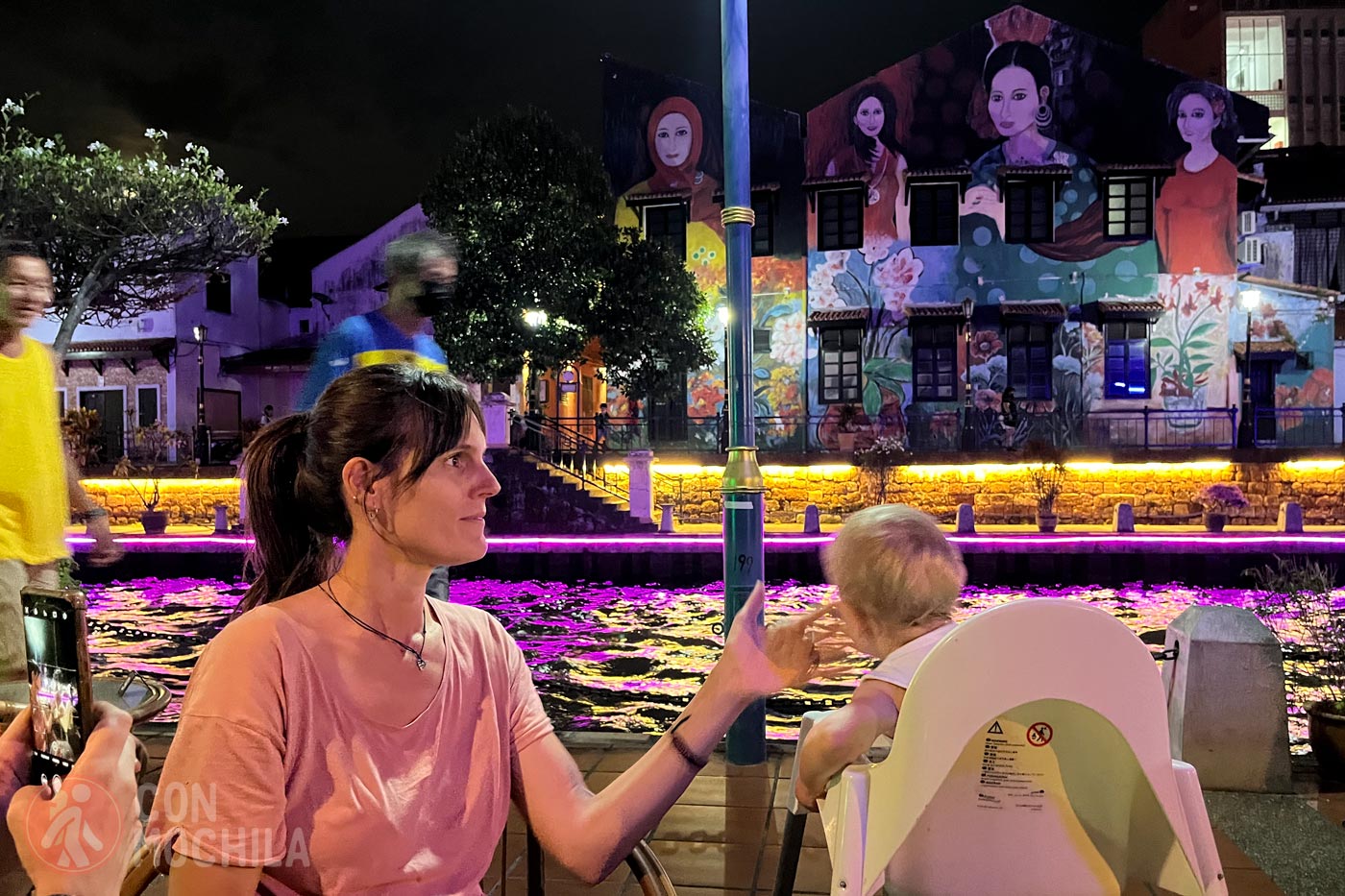
Diapers and wipes are also easy to find in both pharmacies and supermarkets. The only drawback is that they will likely be brands you don’t recognize, and if you need products for sensitive skin, it might be better to look in pharmacies or ask for recommendations.
We are quite conscious when it comes to sustainability. At home, we use cloth diapers, and for disposable diapers, we choose brands that are gentler on the baby and more eco-friendly. However, while traveling, this hasn’t been feasible, and we’ve had to settle for what we found.
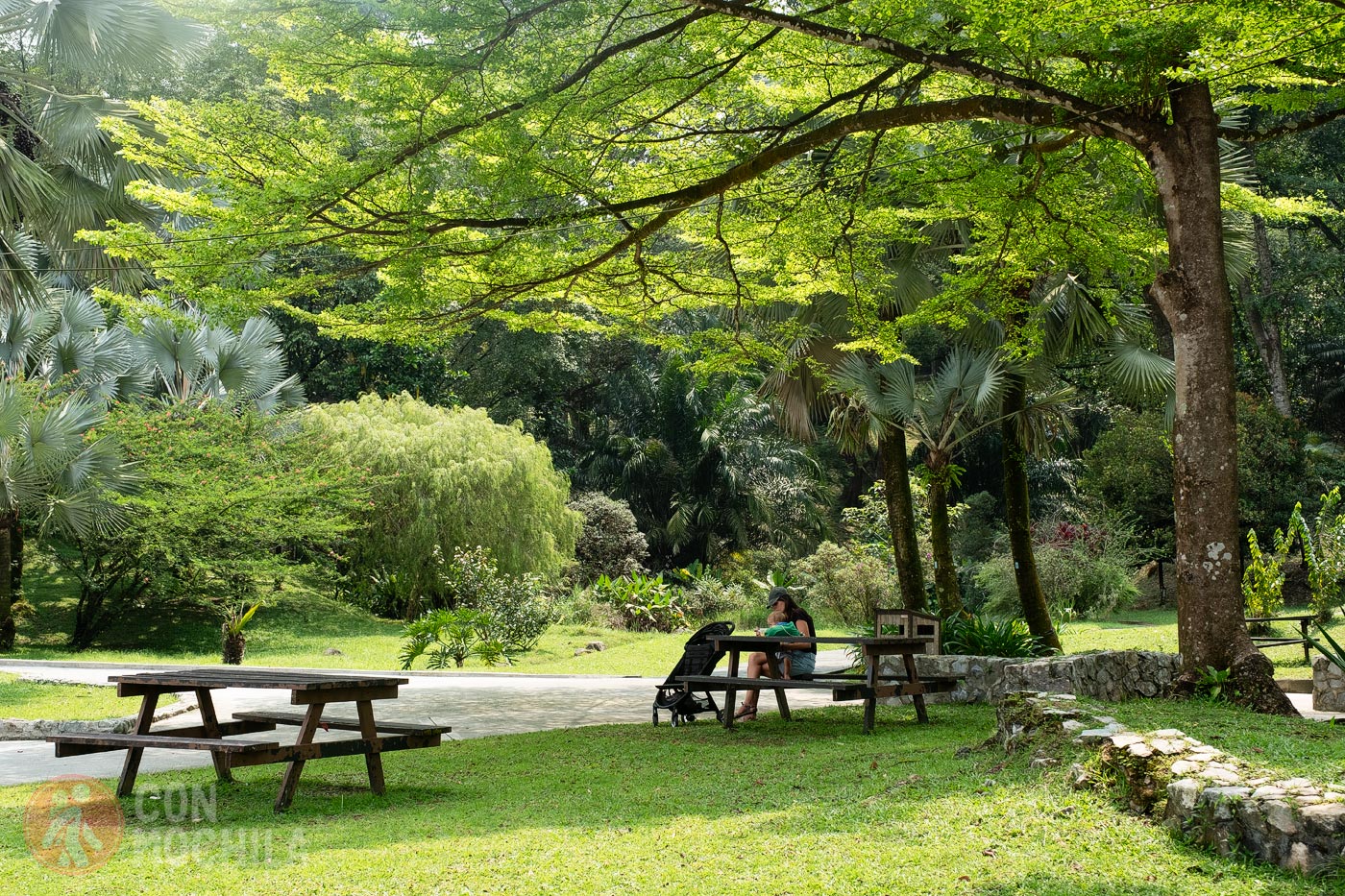
They try to convince us that we need so many things when we have our first baby that we sometimes get carried away and think that without them, we won’t be able to take care of our child properly.
A changing table with a built-in bathtub is definitely helpful for the first few months, allowing you to bathe your baby without straining your back. But if you don’t have one, there are alternative solutions:
Inflatable Bathtub: There are inflatable baby bathtubs similar to beach mats, which are great for babies under 7-8 months old who can’t yet support themselves. They take up very little space in your suitcase and are easy to inflate and deflate.
By the way, you can find thousands of them on platforms like Vinted and Wallapop, as they are rarely used for long.
Plastic Basin: Some accommodations have provided us with one, though not all do.
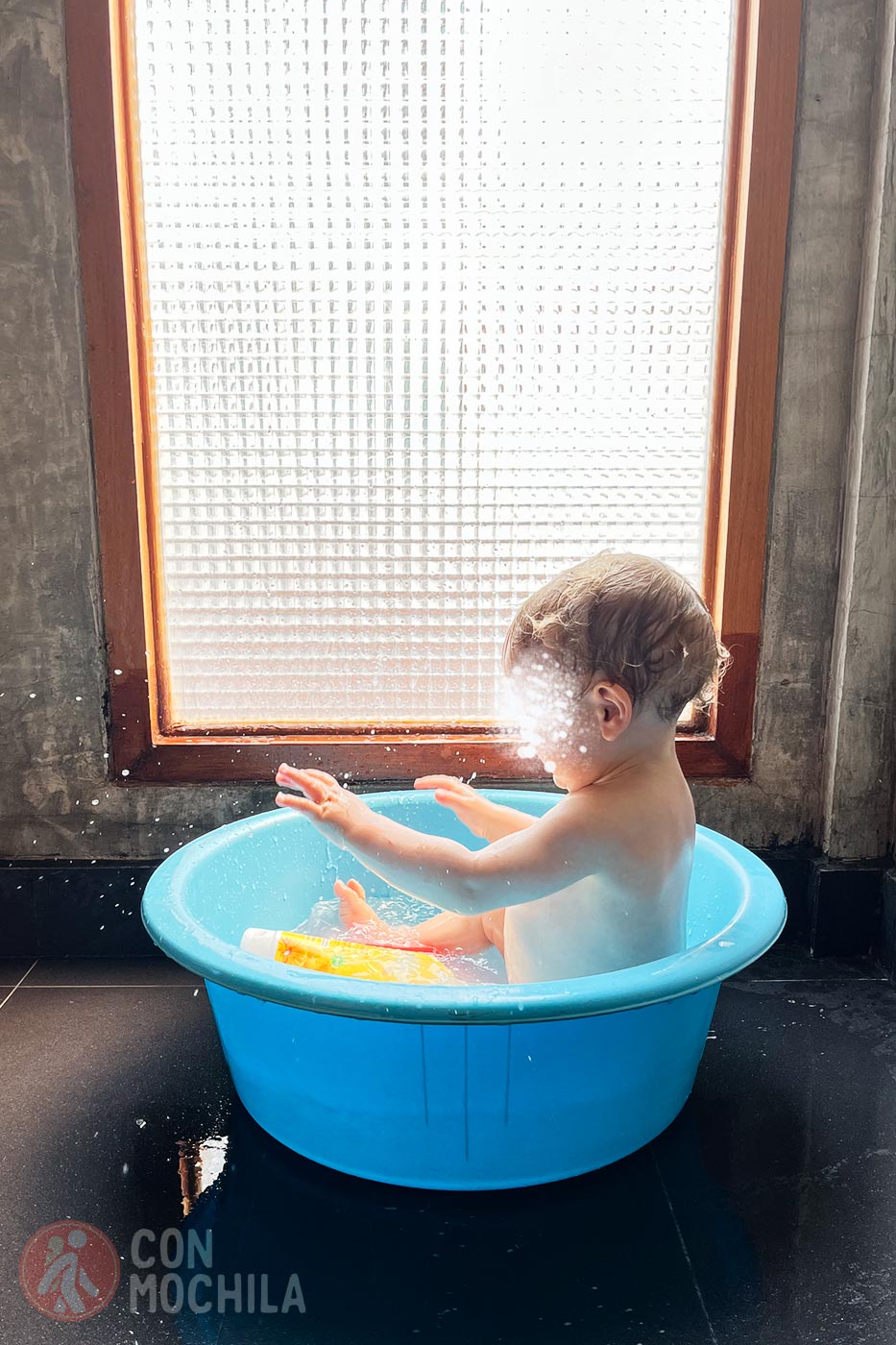
Mesh Baby Carrier: I’ve never used one myself, but some mothers say that a mesh baby carrier can also be used in the shower. Additionally, this type of carrier is useful for both the beach and the pool.
Standing Shower: If your baby can already stand, and you don’t want to carry extra gear, you can shower them standing up. However, this may require both parents’ collaboration.
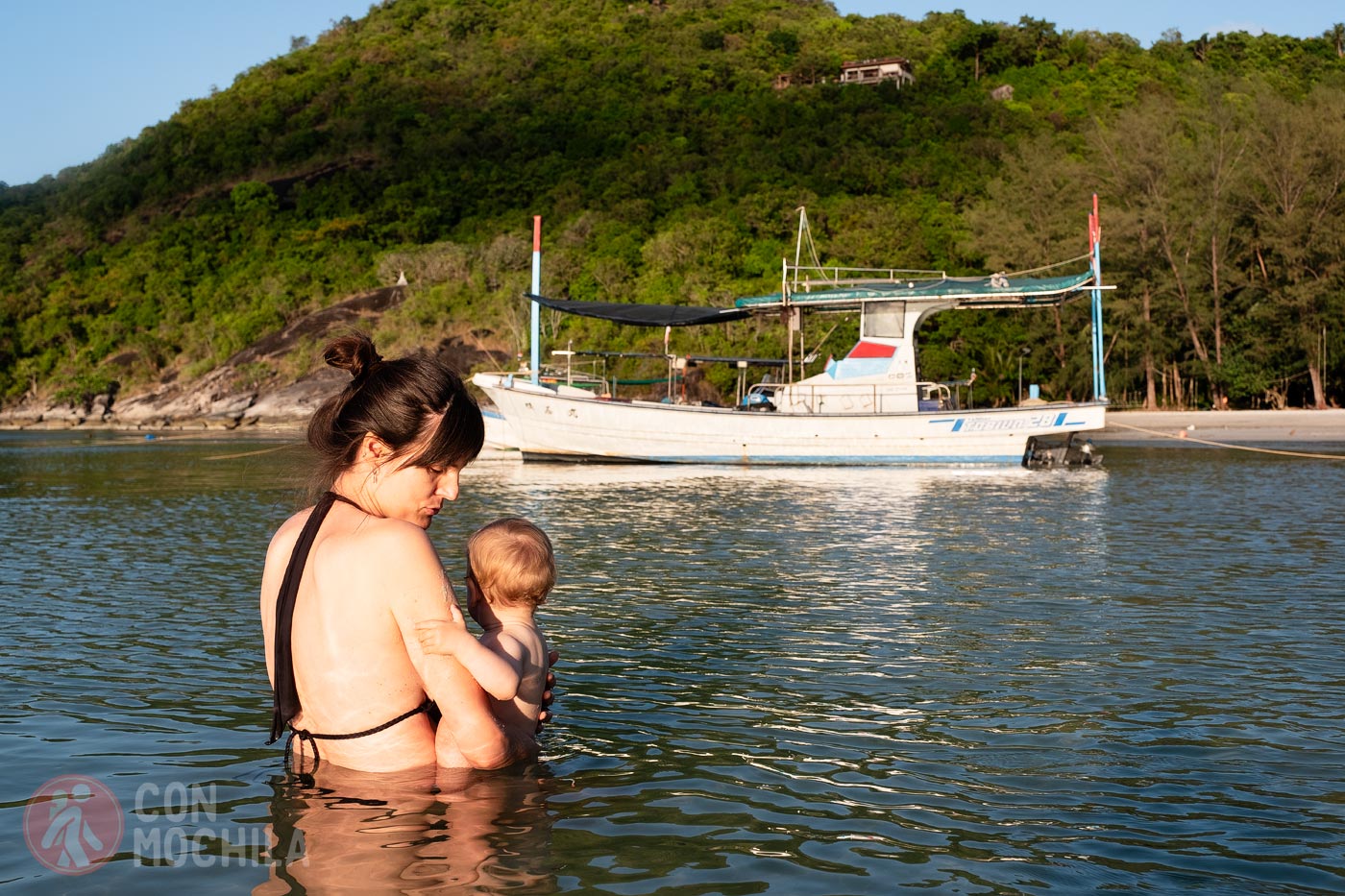
Since traveling with a baby means carrying a few extra items, try not to bring too many clothes. How?
Well, on our first trip with Andreu, we made the mistake of planning a long journey that combined different seasons. We started in Jordan (winter) and ended in Southeast Asia at the end of the dry season, when it was hot.
This meant we had to pack twice as much clothing, winter and summer outfits, for everyone: for us and for him. To reduce luggage, we split his clothes between our backpacks so we could carry one less bag, but even then, it was a lot.
My recommendation, and something we will definitely do from now on, is to avoid mixing different seasons when traveling. Either choose only warm destinations or stick to cold-weather countries. Ideally, find places with a mild climate and avoid extreme temperatures.
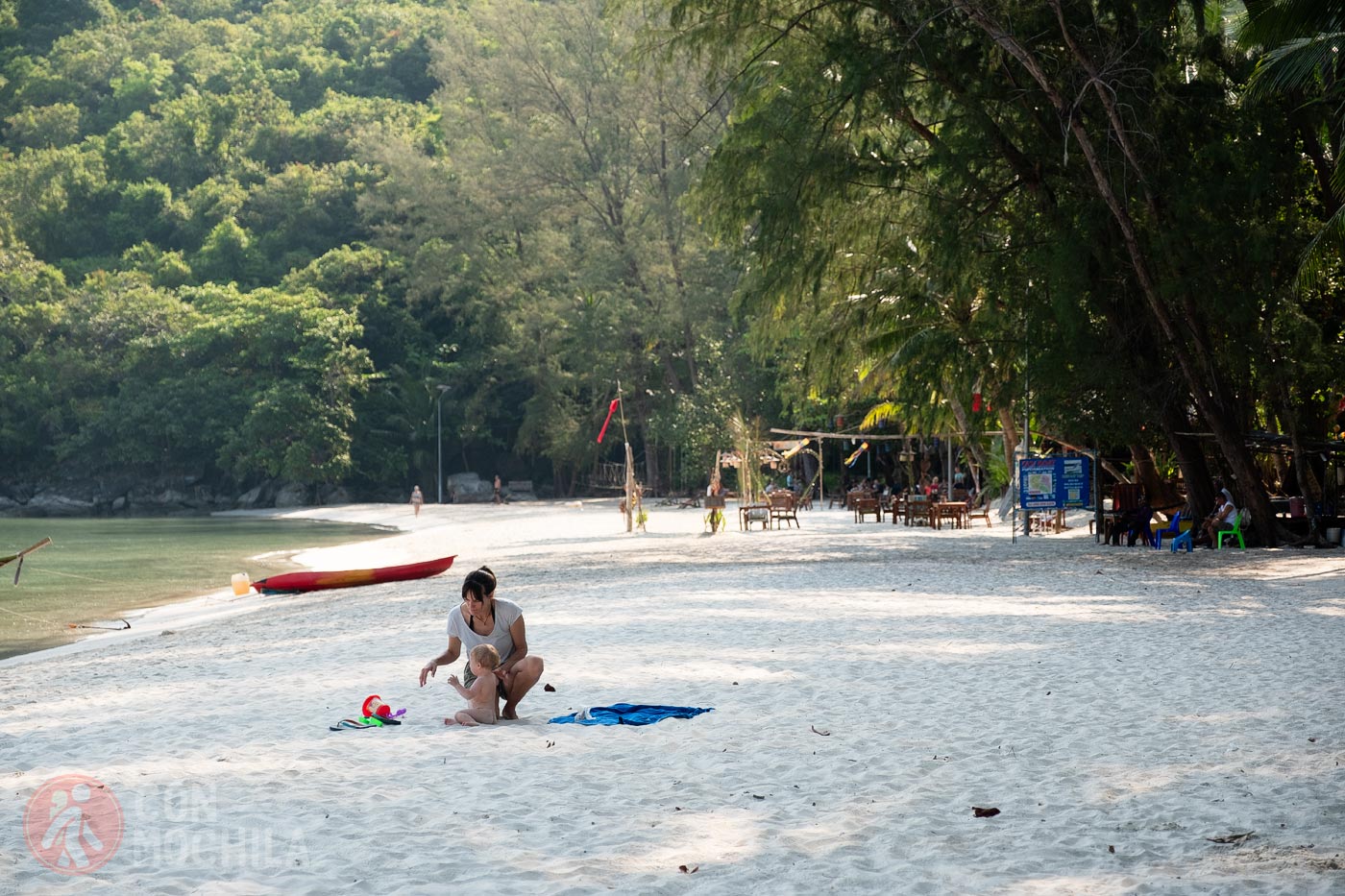
If you’re traveling without a return date, chasing summer is the most practical option—if, of course, you enjoy the heat!
There is no such thing as a perfect destination for traveling with a baby, although some places are more baby-friendly or better equipped for it. Obviously, the more rural or less developed the destination, the more challenging everything will be.
On the other hand, the more developed the country, the more comfortable and convenient the experience—for example, any destination in Europe, large cities, or countries like Japan, which has an excellent reputation for traveling with young children.
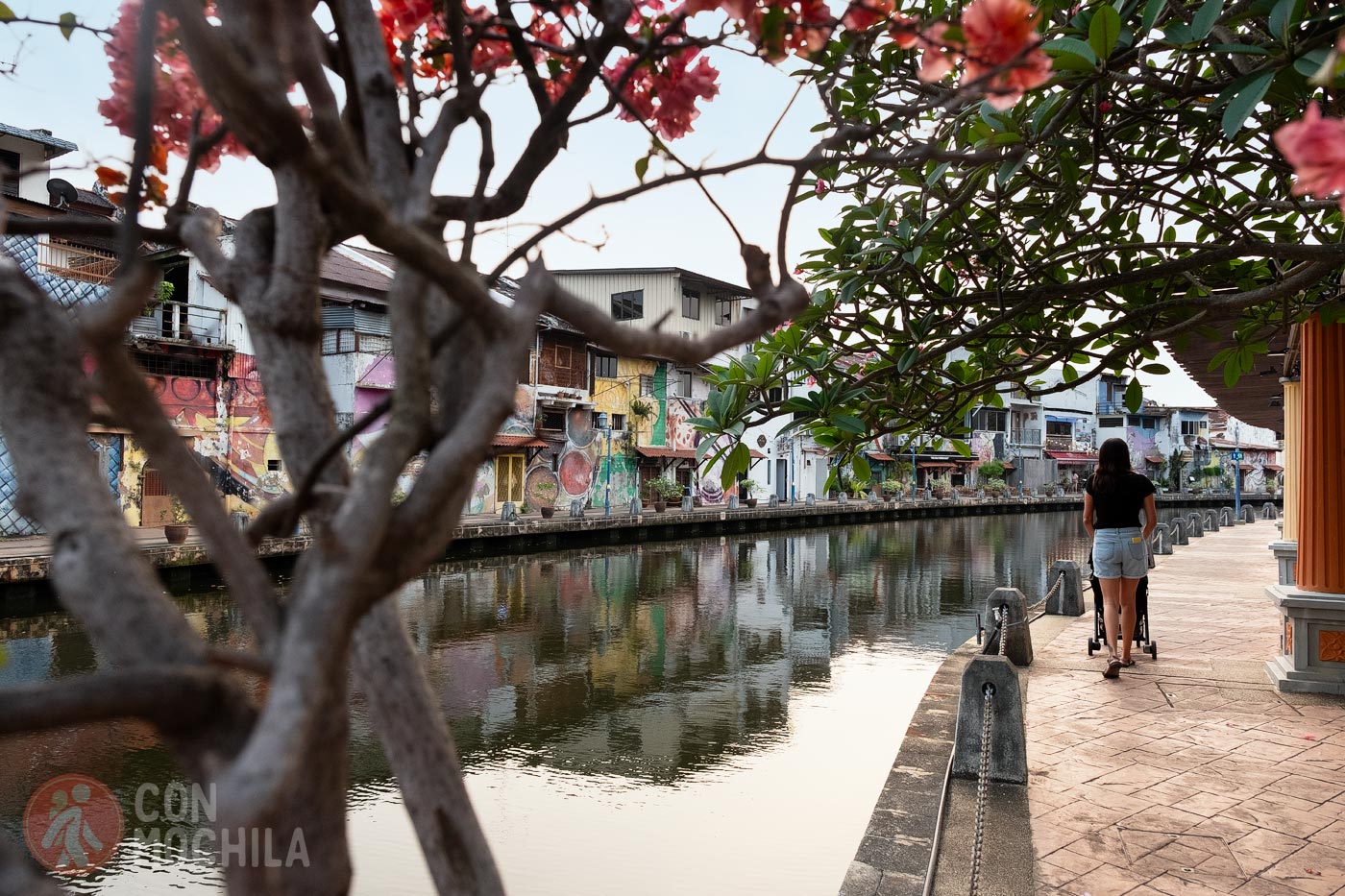
One place that really surprised us was the island of Koh Phangan, specifically Thong Nai Pan Yai Beach, where we saw dozens of families with children of all ages.
As parents, common sense and caution naturally lead us to choose countries or cities with a good healthcare system and reliable hospitals, just in case of an emergency.
Over time, we have gradually increased our sense of adventure.
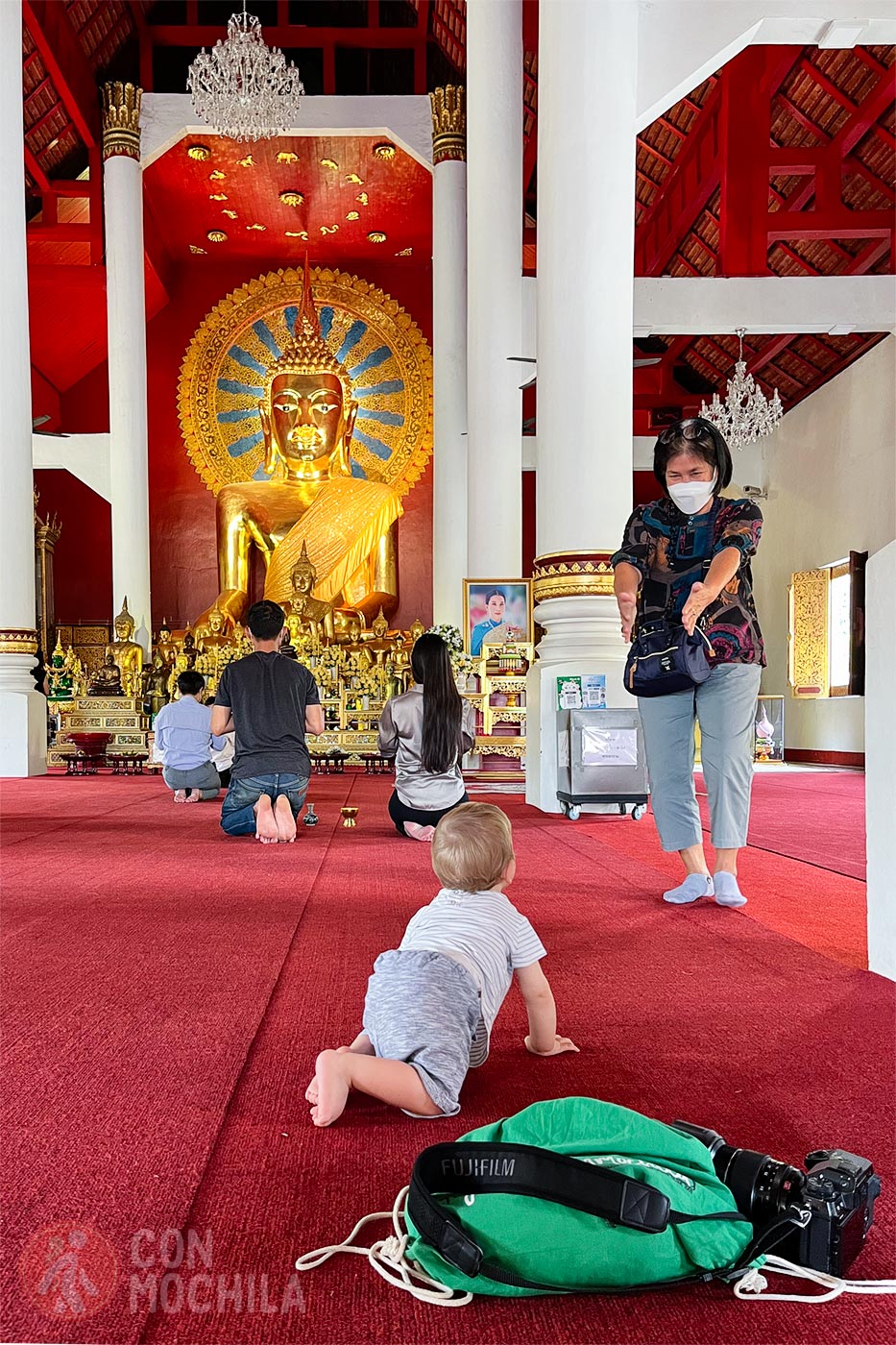
When Andreu was three weeks old, we took a mini getaway to the Sierra de Espadán, visiting Eslida and Ahín. At four months, we ventured a bit farther to Andalusia for a road trip through Jaén, Seville, Granada, Córdoba, and Ronda.
Later, I traveled alone with him by train to visit a friend in Tarragona.
After gaining some confidence, when he was six months old, I took my first trip abroad with another friend to Lisbon.
Seeing that he adapted well to changes, that flying was not a problem, and after learning from our previous travel mistakes, I told Toni, “I think we’re all ready for a long trip.” So, when Andreu was eight months old, we took the leap to Asia!
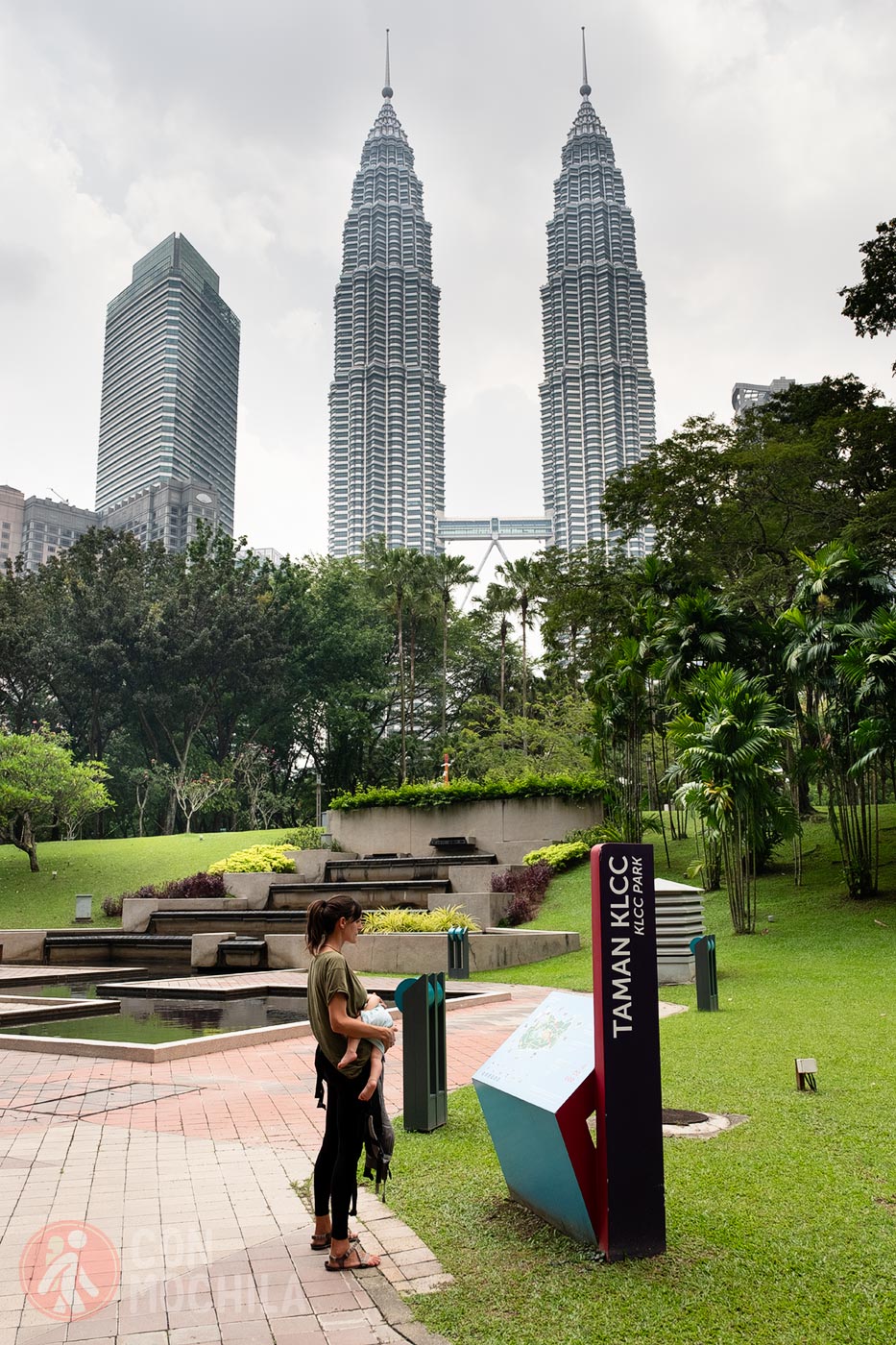
This gradual approach has helped us avoid stress and overcome fears little by little.
For a long trip that includes multiple countries, I highly recommend bringing both a baby carrier and a stroller.
The only exception would be if you’re traveling to places where you know a stroller will be inconvenient (for example, we didn’t use one in Jordan) or if you feel completely comfortable carrying your baby at all times.
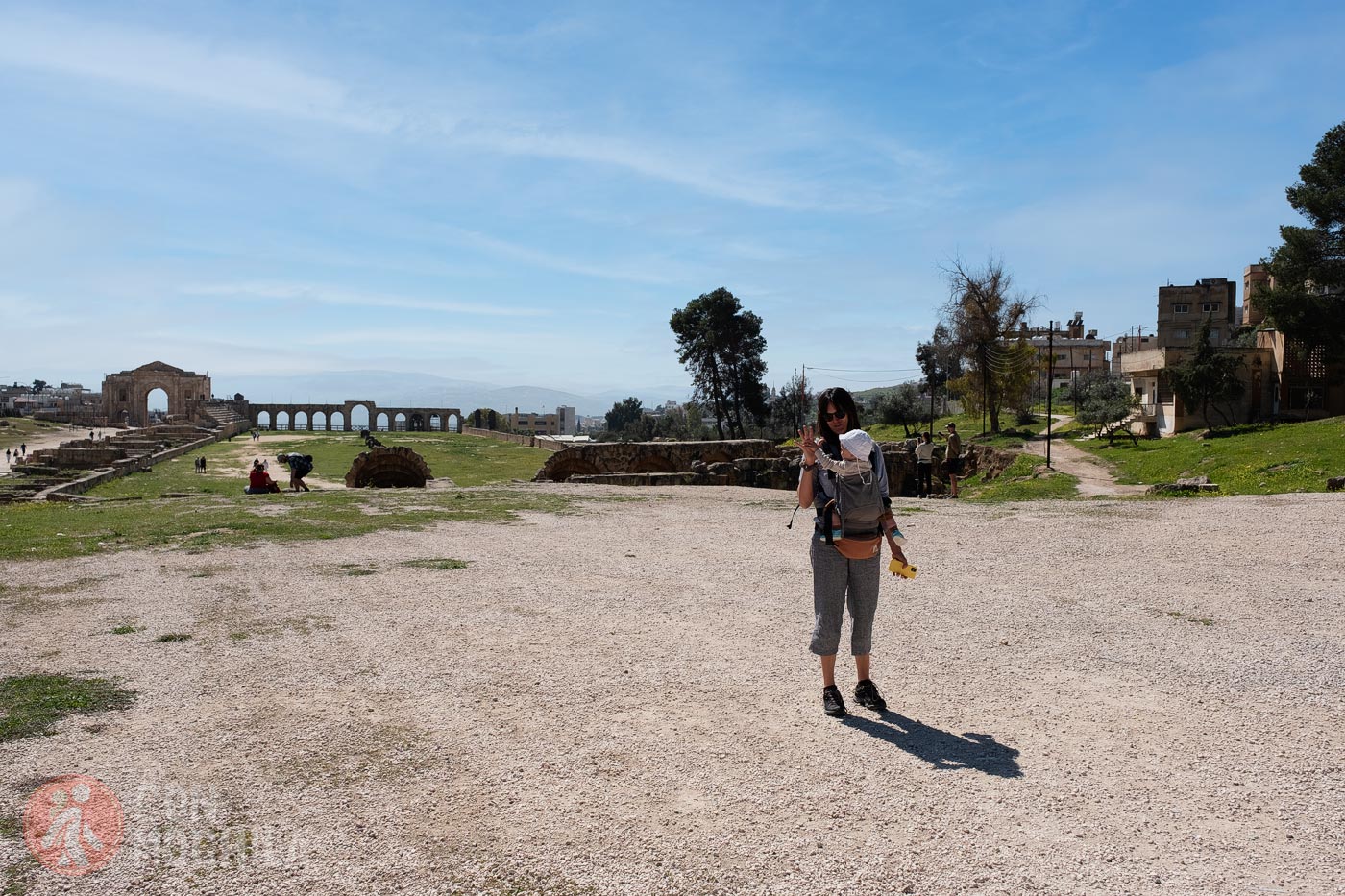
When it comes to exploring, hiking, or sightseeing, a baby carrier is incredibly convenient—it allows you to walk, jump, run, and navigate uneven terrain easily. With a stroller, all of this becomes more complicated.
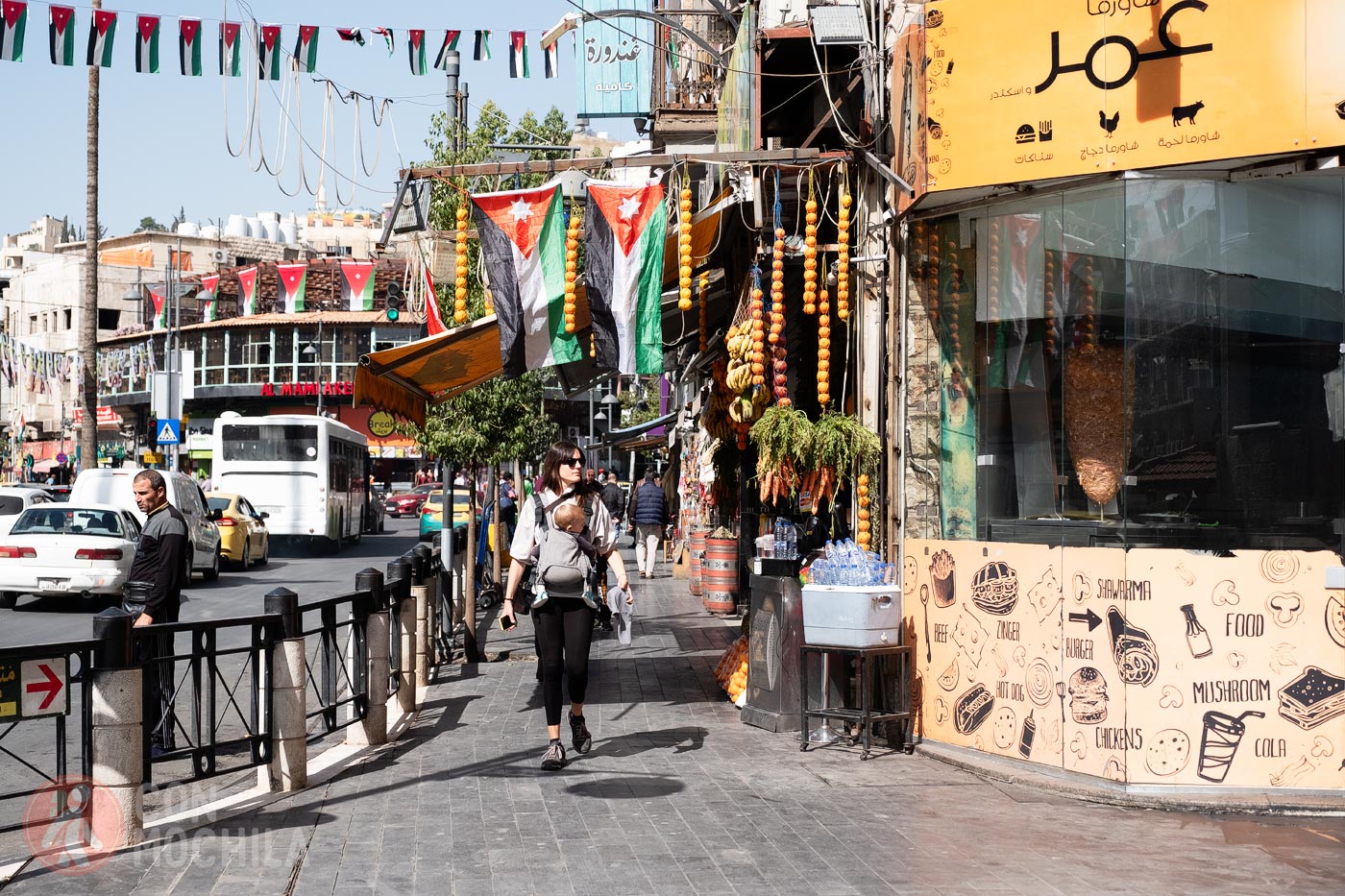
However, when it’s time to go out for lunch or dinner, having a stroller is a huge advantage—if the baby falls asleep, you can simply leave them there and relax. Some destinations are more stroller-friendly, while others are better suited for babywearing.
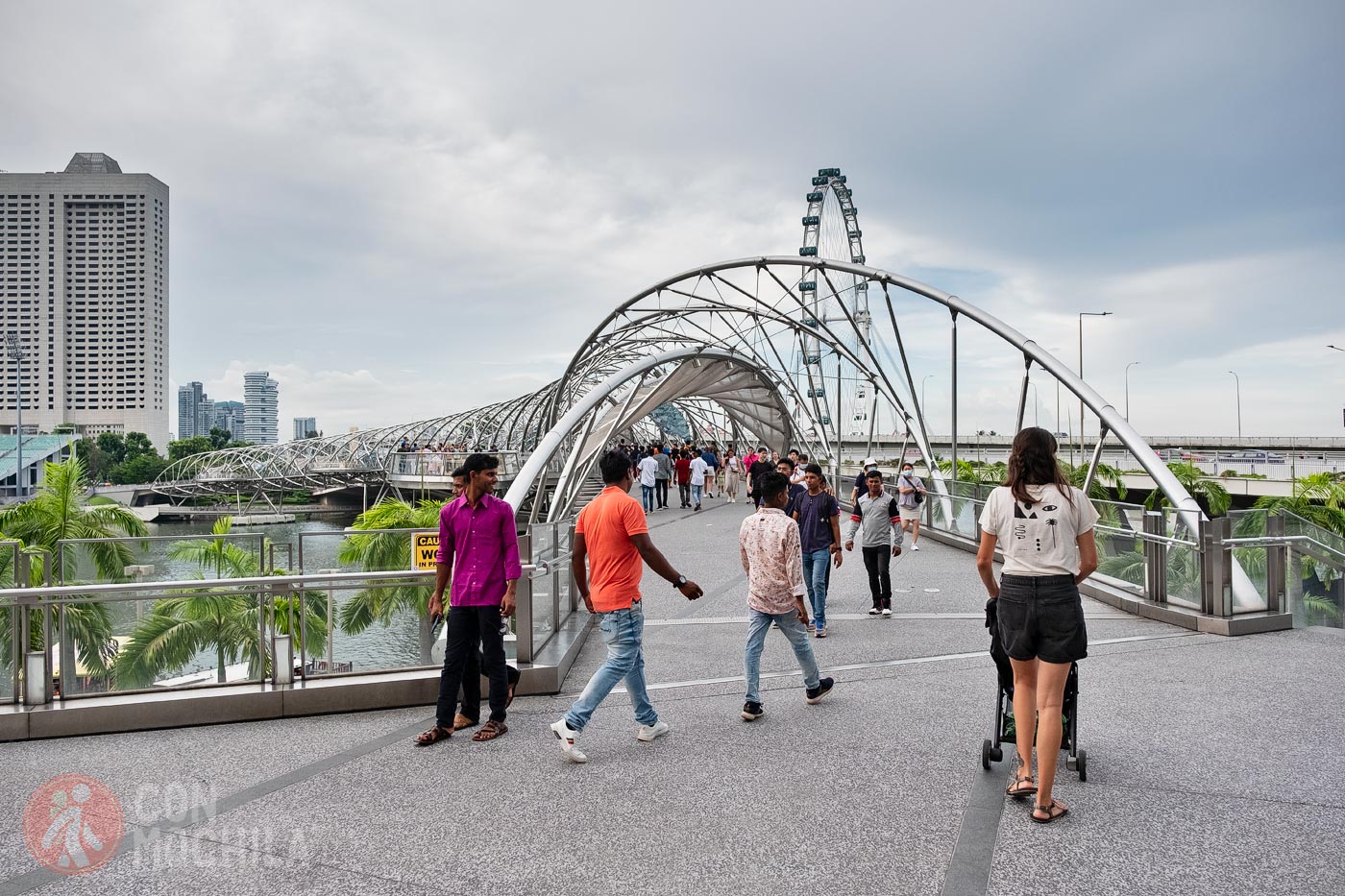
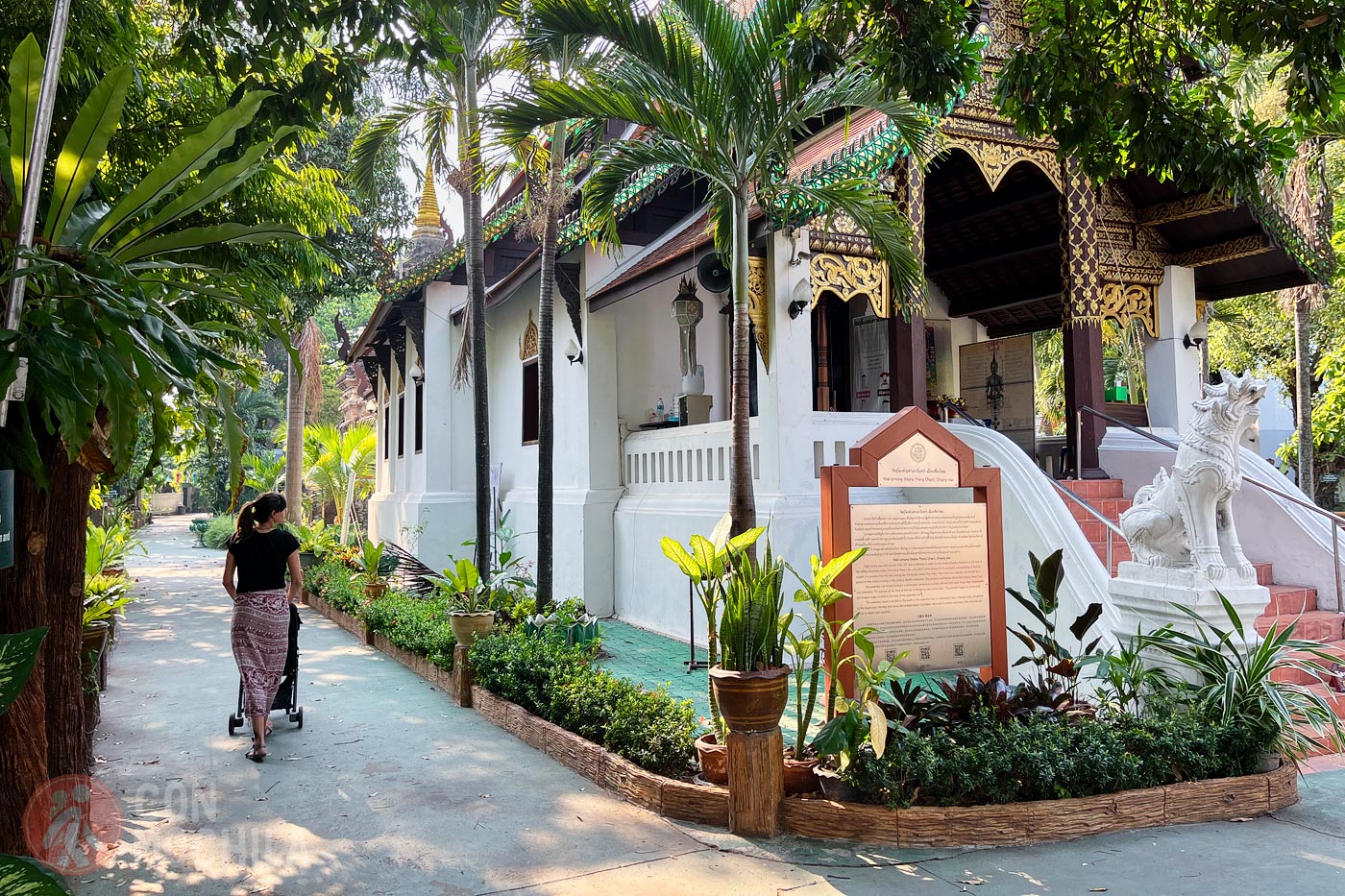
The model we have used, and absolutely love, is the Baby Jogger City Tour 2. It’s easy to fold, lightweight, compact when folded, fully reclines (180 degrees), and has an adjustable footrest, making it super comfortable for naps.

Before traveling, we visited an international vaccination center, where we received professional guidance on which vaccines a baby can and cannot receive.
We also felt it was important to wait until the baby had completed his first round of vaccines before heading to Southeast Asia, which meant waiting until he was at least four months old.
I have to admit, before returning to Southeast Asia with a baby, I started worrying about something I had never thought about before: dengue fever. I was so concerned that I even questioned whether it was reckless to bring him there, even though we had lived in the region for extended periods before.
But then I looked at a world map and thought: “If I eliminate all the countries where dengue is endemic, I’ll be eliminating all the places I actually want to visit.”
And until when? Because if I was afraid when he was 10 months old, I could have continued worrying when he was 2, 3, or even 4 years old… Consulting an international vaccination center helped ease my concerns, as well as talking with María and Luís, who live in Malaysia and Thailand, respectively. Besides the usual precautions, we also brought the children’s version of our usual mosquito repellent, Goibi for kids.
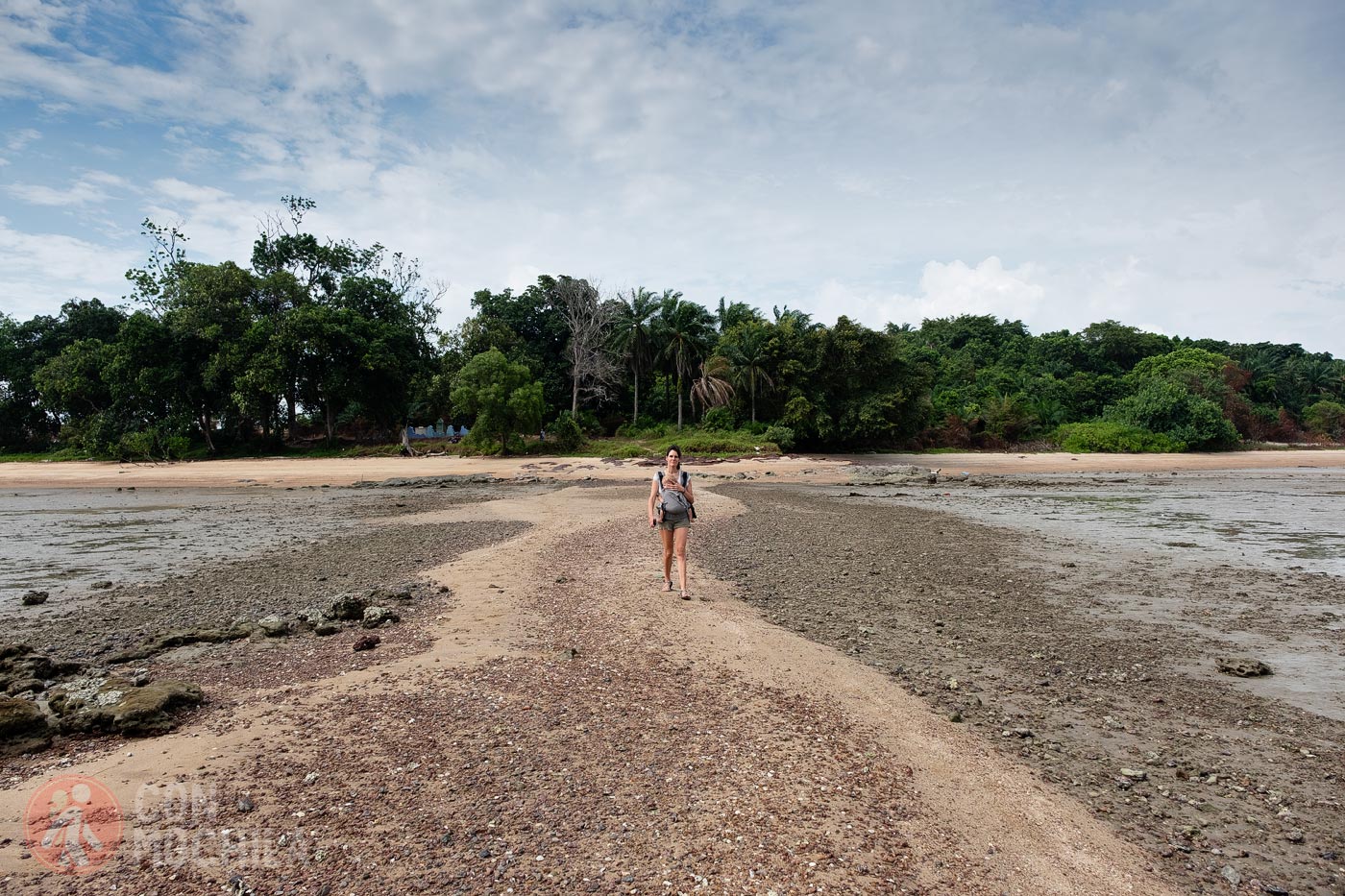
It’s recommended not to apply sunscreen on babies younger than six months. After that, you should opt for creams with physical filters (which is great because they don’t harm coral either! What? You don’t know what I’m talking about? Click here). To choose sunscreen that is safe for both your baby and the environment, I highly recommend the article Living Without Plastic (in Spanish).
If we always had travel insurance before, now we do so without question. When traveling with a child, we don’t take any risks—we want the peace of mind of knowing that, even if we’re in the middle of nowhere, we can call for assistance and be sent to the best medical center or hospital available. For this type of trip, we highly recommend IATI Star. Bonus: If you book it through this link, you’ll get a 5% discount!
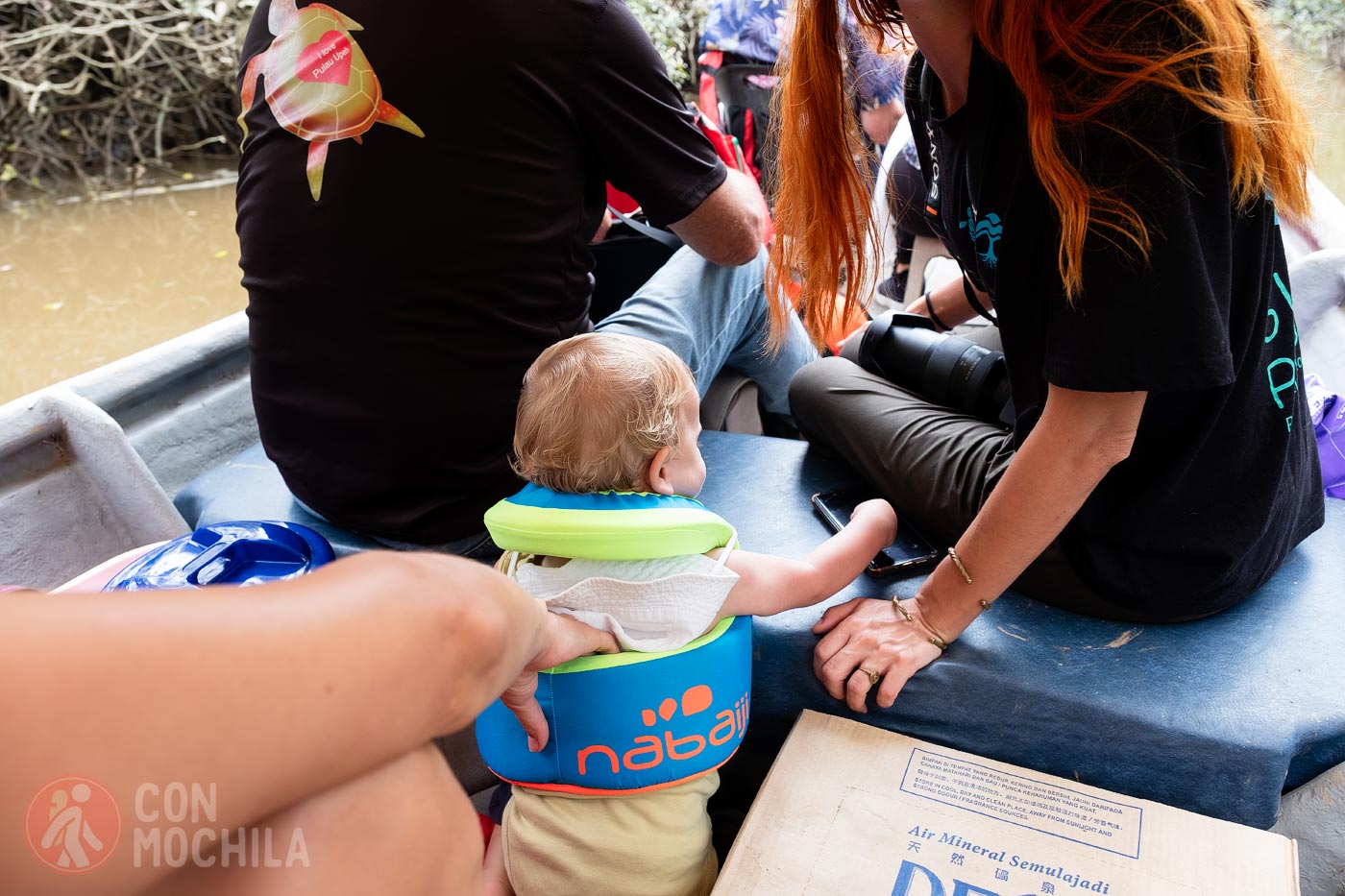
As we’ve already mentioned, the most important thing when traveling with a baby is to have good travel insurance so you can receive immediate assistance when needed. However, something else that is highly recommended is bringing a well-stocked first aid kit with the essentials:
Honestly, I didn’t realize how much I needed this trip until I took it. Traveling helped me let go of many fears and anxieties, allowing me to flow more easily as a mother.
Seeing him enjoy himself, laugh, socialize, try new foods… Looking at photos and realizing that we left with one baby and came back with another. Without a doubt, I would do it again. And I absolutely recommend it to anyone considering it.
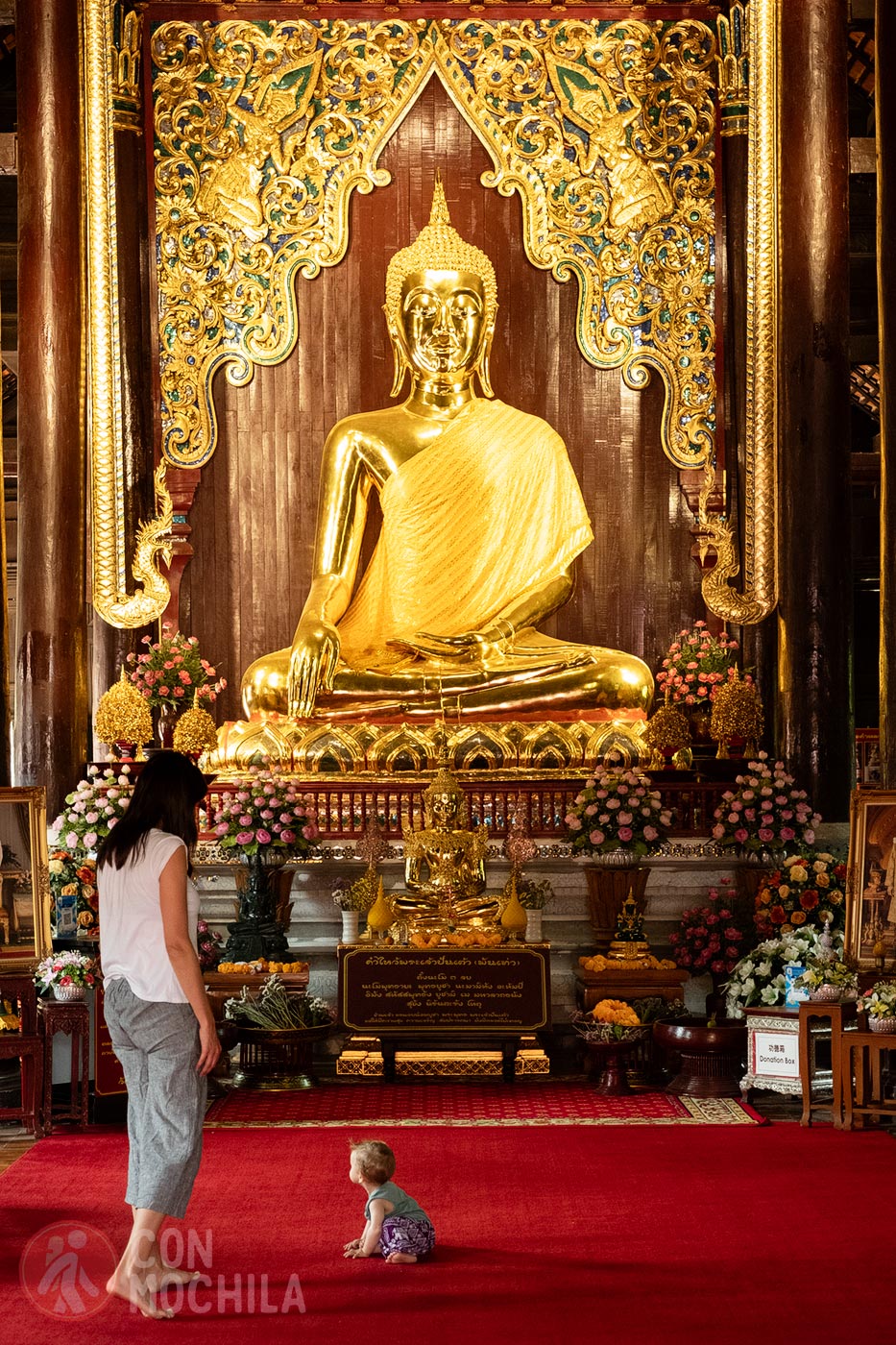
Necessary? Well, that depends. For our mental health—especially mine, as a mother—yes, it was. Breaking the routine, seeing that life goes on, rediscovering parts of myself beyond motherhood… it was wonderful for me.
Selfish? Not at all. The whole family enjoys the trip, including the little ones. Unless your baby has specific needs that can’t be met while traveling, go for it.
